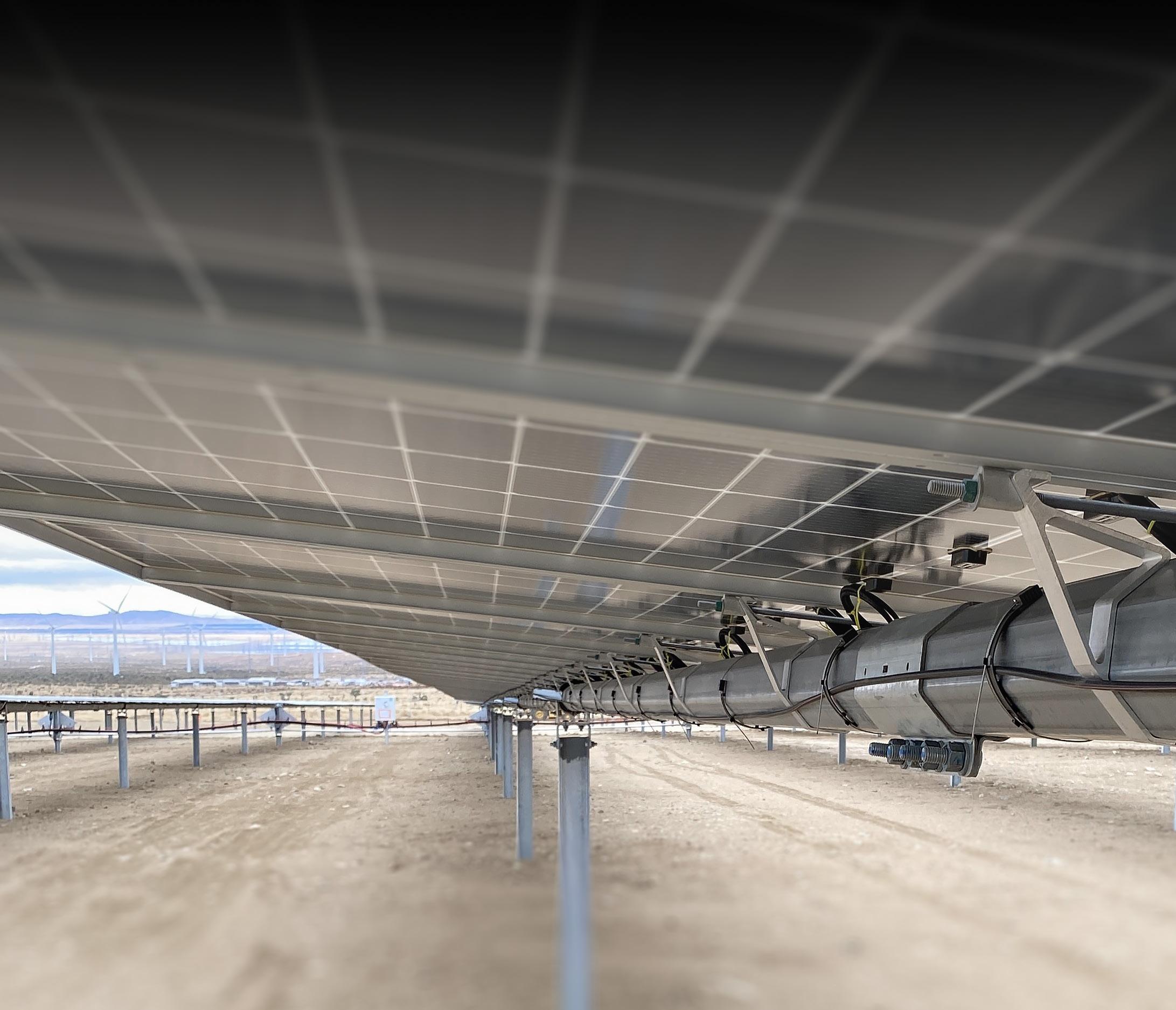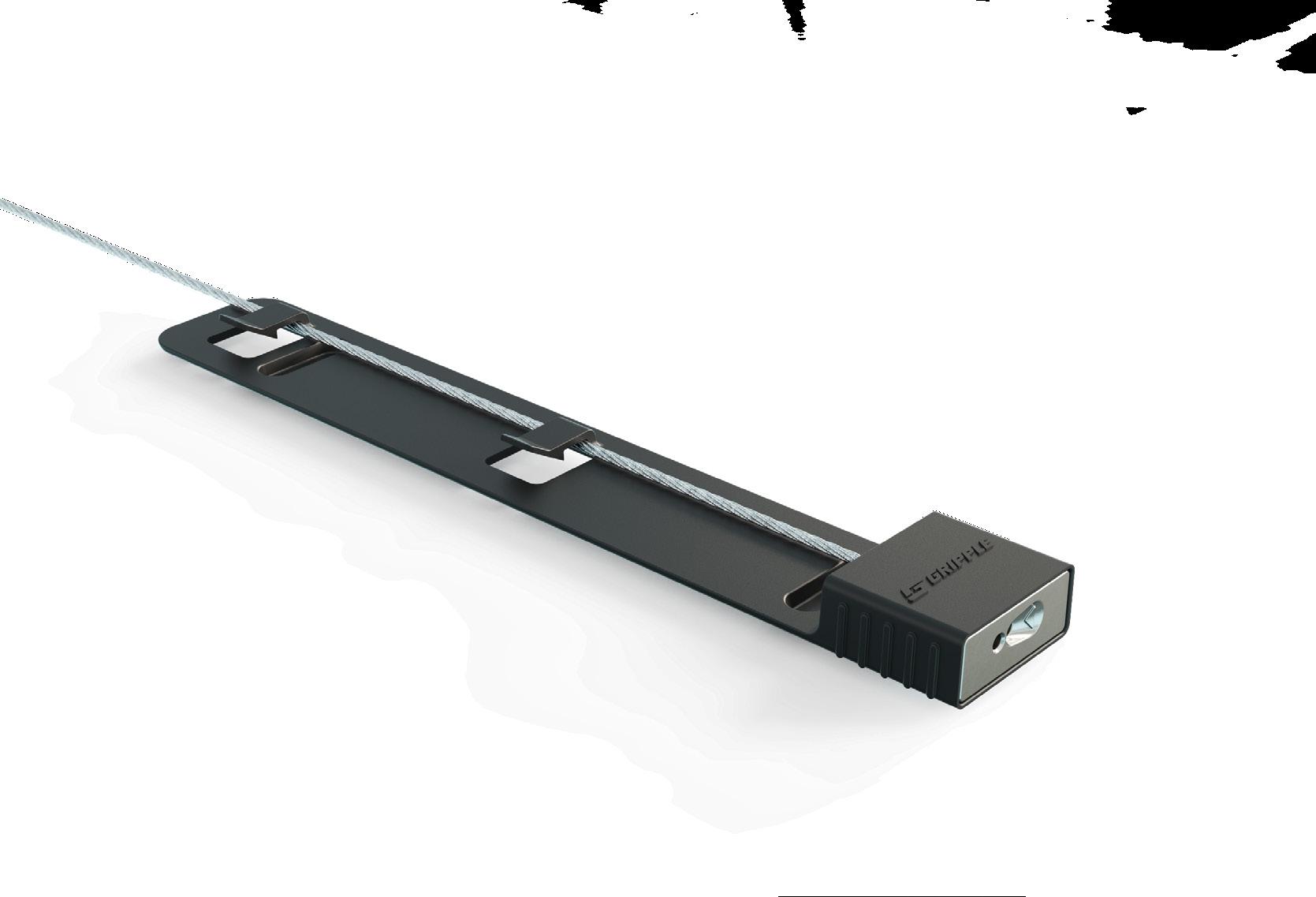

PRODUCTS

PLUS REPOWERING GIVES NEW LIFE TO AGING ARRAYS BATTERY INTEGRATORS ADDRESS NOISE ISSUES RISING STARS MAKING A DIFFERENCE THIS YEAR









JANUARY 27–28, 2026 | HONOLULU,
HI
More than just the largest clean energy event, RE+ is a catalyst for industry innovation designed to supercharge business growth in the clean energy economy. Co-located with Solar Power International, Energy Storage International (ESI), RE+ Power and RE+ Infrastructure.



Best-In-Class Free Air separation (1.525” between conductors) NEC 310.17 compliant • Fits up to (20) conductors, sized up to 1250 kcmil Tiers adapt to different cable sizes • Tool-free snap-together install

First Word Staff
EDITORIAL
Editor in Chief
Kelly Pickerel kpickerel@wtwhmedia.com
Managing Editor
Kelsey Misbrener kmisbrener@wtwhmedia.com
Senior Editor Billy Ludt bludt@wtwhmedia.com
CREATIVE SERVICES & PRINT PRODUCTION
Art Director Allison Washko awashko@wtwhmedia.com
AUDIENCE DEVELOPMENT
Director, Audience Growth
Rick Ellis rellis@wtwhmedia.com
Audience Growth Manager
Angela Tanner atanner@wtwhmedia.com
MARKETING
VP, Marketing Annie Wissner awissner@wtwhmedia.com
Webinar Manager Lindsey Harvey lharvey@wtwhmedia.com
CUSTOMER SERVICE
Customer Service Manager Stephanie Hulett shulett@wtwhmedia.com
Customer Service Representative JoAnn Martin jmartin@wtwhmedia.com
Customer Service Representative Tracy Powers tpowers@wtwhmedia.com
Customer Service Representative
Renee Massey-Linston renee@wtwhmedia.com
Customer Service Representative
Trinidy Longgood tlonggood@wtwhmedia.com
LEADERSHIP
CEO Matt Logan mlogan@wtwhmedia.com
SALES
Ashley N. Burk
737.615.8452
aburk@wtwhmedia.com
Jami Brownlee
224.760.1055 jbrownlee@wtwhmedia.com
Daniel Glazier
773.835.0800 dglazier@wtwhmedia.com
The U.S. solar industry tries cautious optimism
It doesn’t feel like RE+ was just a few months ago. Frankly, by 2025 standards, that ought to be an eternity. We went to the show with the expectation that this one would be different than the jovial, frenetic shows of years past. And it was different, but not by any drastic measure. 2024 was a landmark year with a record number of RE+ attendees and a future painted by solar subsidies and a new wave of domestic manufacturing. Sure, attendance was down at RE+ this year. But more than 37,000 people still showed up. Compare that to the 40,000-plus from last year.
Optimism, whether performed or genuine, was the overwhelming impression we got from talking to people on the show floor. There’s still demand for solar whether federal subsidies are active or not, and while they still are, solar demand remains at an all-time high. Separate from incentives, the industry is selling itself on the ability to deploy solar significantly faster than other forms of new electricity. Energy costs are rising at astronomical rates, in large part due to new AI data center demand. Some solar developers are even being commissioned to build projects alongside these energydevouring data centers, shifting the original purpose of solar from decarbonizing and electrifying the grid to trying to keep pace with new energy consumption patterns.
Solar is now tangled in a mess of fiber optic and PV cabling. This technology was legitimized for its economic advantages in addition to its environmental benefits. But the electric snake is eating its own tail
so a person can generate an uncanny image through a generative AI platform at the cost of the ozone layer.
Solar is still crucial. In fact, with every passing day, it’s more important than it’s ever been that solar PV connects to the grid. Choosing a fossil fuel alternative would only threaten the conditions of our environment at an even faster rate. There are many people still striving to make solar the primary source of electricity in this country, despite growing demands on the grid, despite monumental policy headwinds, despite rising costs of living. These people are streamlining the solar development and construction process; they’re advocating in local, state and federal policy venues for better legislative conditions for solar; they’re striving to make their businesses ideal places to be employed; they’re ensuring the public understands the benefits of this technology.
We’re recognizing a few of these Rising Stars in this issue of Solar Power World, along with this year’s collection of Top Products that are advancing the industry at both the small- and large-scale. To all the innovators and ground-breakers: We hope you know that your work in this industry is valued, because without it we wouldn’t be writing these stories in the first place. SPW
Billy Ludt
Senior Editor bludt@wtwhmedia.com





















































































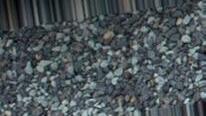



















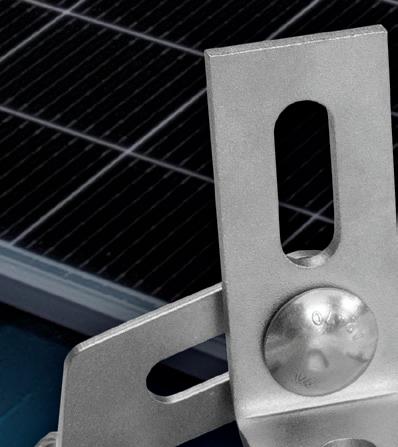

































































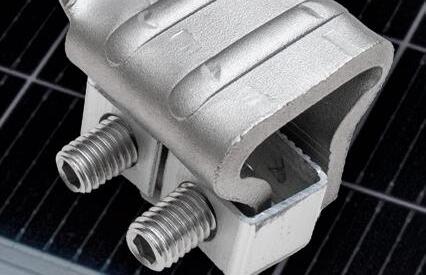





















Industry advocates pivot
Solar advocates turn focus to state policy efforts
Panels
A look into the status of critical minerals for solar
Inverters
EG4’s DIY-centric inverters and batteries go mainstream
Mounting
Alternative mounting options for commercial rooftops
Storage
BESS industry takes steps to limit noise complaints
Solar Power World gathered expert judges for the second-annual Top Products contest. The winners in large-scale and residential categories range from inverters to software solutions. Read the full list, including Honorable Mentions, in this issue’s special section. PAGE 33
Solar Power World’s 2025 collection of people making a difference in the solar industry, as nominated by their peers. PAGE 49

Solar projects have the potential to last for 20+ years, but repowering in their middle age can boost power production and efficiency and update technology to match the times.
Burns & McDonnell


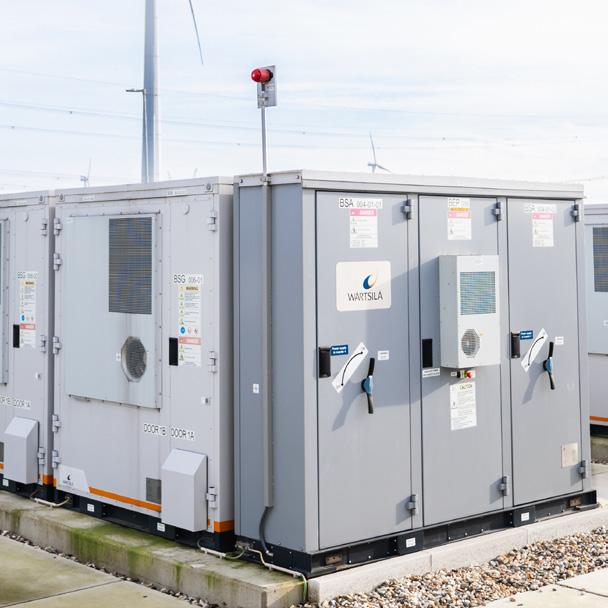



AGING SOLAR PROJECTS FIND NEW LEASE ON OPERATING LIFE WITH repowering
Promising that a solar project will operate without interruption for more than 20 years is a selling point for the technology, but it isn’t entirely truthful. Certain components, including solar panels, are often warrantied for 20 to 25 years and can feasibly continue generating energy at incrementally lower efficiencies as they age. However, PV inverters have the demanding task of converting the sun’s rays into useable electricity and only come with five-, 10- and, on rare occasions, 15-year warranties.
Inverters are often the components on an array that need fixing, but they aren’t the sole culprit in system underperformance. Solar panels can degrade when damaged by microcracks

or hail impact. At higher megawatt ranges, some older tracker projects experience actuator faults, halting the sun-following movement that grants them additional generation.
Many projects are reaching their middle-age of operation, and legacy components aren’t the easiest to source if they malfunction. So solar manufacturers are building product lines specifically for repowering older projects and imploring installers to learn the skillset of reviving downed arrays with newer hardware.
Downtime on a solar project means someone’s losing money, but repowering efforts can lead to renewed levels of efficiency and many more years of high performance.
“There’s no one magic bullet solution that really fits everything,” said Kyle Burns, electrical engineer at large-scale solar EPC Burns & McDonnell. “It’s really on a case-by-case basis. There are a bunch of tracker manufacturers and a bunch of module manufacturers and a bunch of inverter manufacturers. There’s so many permutations in between there, between different equipment vendors, that there is a lot of specialization on each individual project that makes each one so different.”
A sea of string inverters
Brandon Davis, sales director of distribution at SMA America, said residential solar projects installed 10 to 15 years ago primarily used string
BILLY LUDT • SENIOR EDITOR

inverters. Their popularity fell when rapid shutdown requirements were adopted and the market shifted to using microinverters and optimizers. Now, those warranties on older string inverters are either sunsetting or inactive.
“I’ve seen various testaments that 400,000 inverters need to be replaced in the next five years,” Davis said.
String inverters of that era were heavier, likely didn’t have system monitoring and lacked modern safety features, like arc fault and ground fault circuit interrupters. They also had lower power classes than the string inverters of today.
They’re not easily replaced nowadays, Davis said, because many residential installers have worked mostly with microinverters and don’t have the string inverter skillset.
The difficulty of replacing components on an existing rooftop solar array depends heavily on what project records have been kept. If there are project records, then a technician will have a better idea of how everything is laid out. If not, then there’s a lot of troubleshooting ahead.
Technicians can work with manufacturers’ applications engineers by sending existing plan sets to determine which inverter product is the right fit for replacement and what else might need modified. It can save someone from tearing up a whole array, instead of just fixing what needs replaced.
SMA’s solution for replacing older string inverters on residential arrays is the Sunny Boy Smart Energy, a hybrid inverter capable of working at the lower power classes of legacy string inverters. The Sunny Boy has monitoring and backup capabilities that weren’t available with previous inverter models.
“Yes, it takes time, and yes, you’ve got to learn, and there’s iteration in doing it,” Davis said. “But once you get through three to five projects, you can start to take some of the stuff that we have as a product and actually upsell. Give customers more features, more value, more benefit and make a little more money on something. Take something that feels like a headache and turn it into an opportunity.”
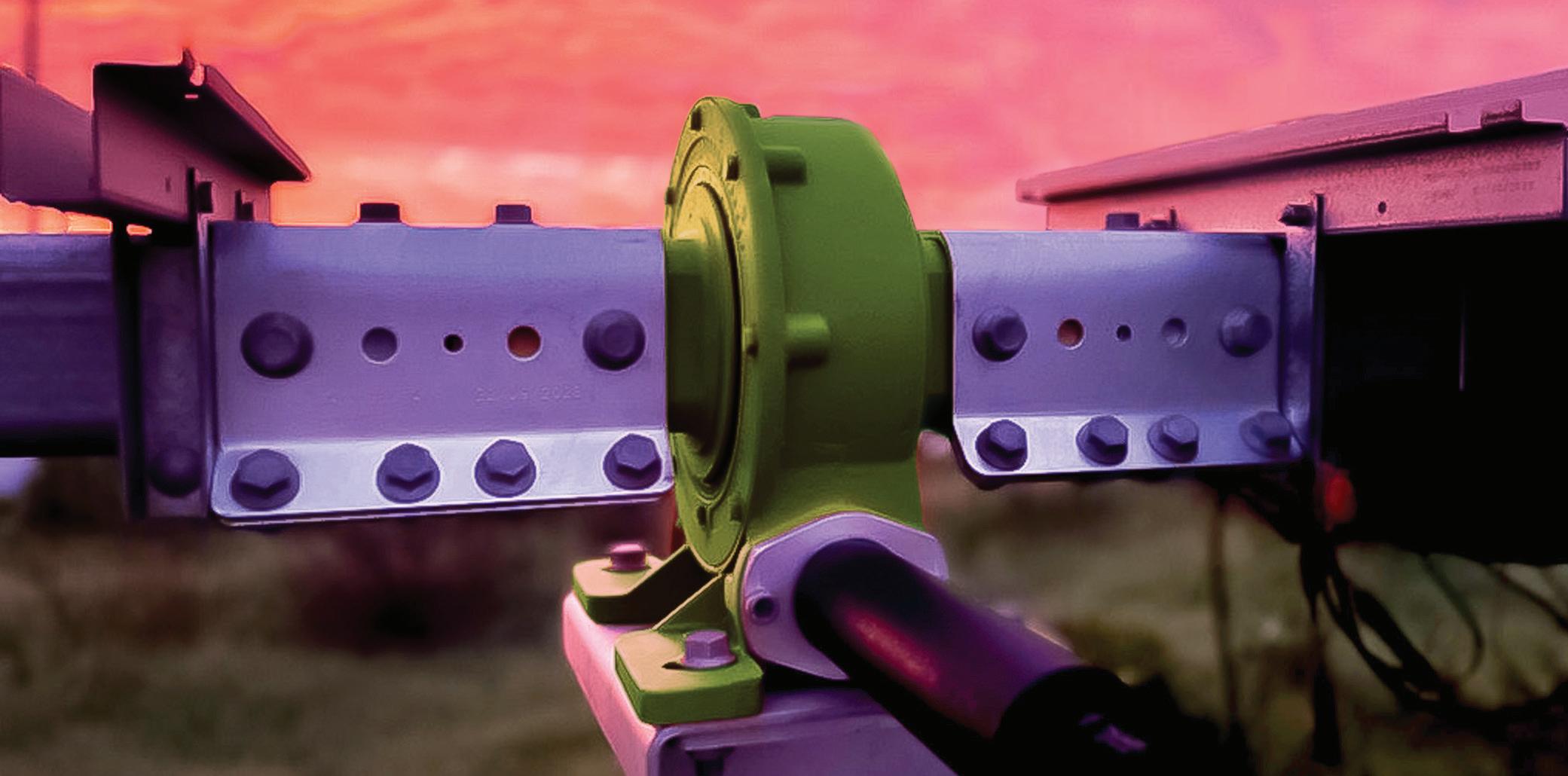
Kinematics is repowering older solar tracker projects with updated controls and actuators. Kinematics
Remedying past faults tenKsolar famously ceased production of its hardy all-in-one solar module and racking product in 2017 after the kitted technology experienced widespread microinverter failures. Five years later, tenKsolar returned to market under new ownership and a new name: Global RAIS.
Global RAIS is reintroducing tenKsolar’s interconnected-cell solar module and racking product in phases, and one of its early goals is repowering those faulty microinverters. The company partnered with inverter manufacturer NEP to modify its 800-W microinverters for repowering purposes.
Greg Cox, co-founder and president of Global RAIS, estimates that about 20% of microinverters on tenK projects have failed, representing about 90,000 microinverters that need replacing.
Many tenK projects have a microinverter architecture different from other flat rooftop projects, because they were grouped together in what is called a redundant inverter bus (RIB). That orientation makes them operate as a single unit. In the initial repowering projects, old failing RIBs were removed and replaced with NEP microinverters. Those legacy solar projects now have the bonus of microinverterlevel monitoring showing real-time production.
“We’ve seen systems that were heretofore producing 30%, 40% of their capability, back up to 100%,” Cox said.

Some of these arrays being repowered date back to 2011.
“If you’re an owner of an array, you’ve got two options. You can either try to repower it, or you can scrap it and put something else there, which is expensive and, honestly, it doesn’t make sense because the modules are still producing power,” Cox said.
Trackers out of rotation
The economies of scale are much heavier in the utility solar market. As with every solar project, malfunctioning components are a cause for downtime, but solar trackers introduce new wrinkles in array upkeep.
Over time, slew drives, the mechanical component that rotates single-axis solar trackers, can experience slowdown or fail entirely. Some legacy manufacturers have folded, so their drives are no longer available for replacement.
The United States alone is home to millions of rows of solar tracker projects. Matt Schneider, a utility solar consultant and founder and principal of Solar Perspectives, estimates that 1 MW of a downed solar project is worth

$35,000 in annual losses. At a larger scale, independent power producers are beholden to the utilities their projects are interconnected to, and if they don’t meet the generation in a power purchase agreement, they can face penalties and even pay for replacement power to make up for the loss.
“Over 10 years, a repower will pay for itself 10-times over,” Schneider said. “It’s all economics.”
Kinematics, a longtime motion control manufacturer, has geared some of its product line to repowering
underperforming solar tracker projects. Kinematics has offered both slew drive and tracker control replacements on existing projects, an effort that was bolstered by acquiring tracker control company P4Q earlier this year.
“In the last two or three years, we have doubtless been part of this market passively, inasmuch as: If there’s a part that fails, somebody’s going to get a spare to do the replacement,” said Magnus Asbo, chief product and strategy officer at Kinematics. “What is changing is that the volume is enough that we want to
Operations
participate more directly and bring some expertise to it.”
Kinematics developed actuator and tracker control systems capable of replacing third-party components. For repowering controls, each tracker has a control unit that connects to a larger network control unit. All of those will be replaced, but by introducing newer controls, legacy tracker projects can be updated with features like hail stow angles, backtracking and overcast light optimization.
Asbo said there is more than 1 GW of U.S. solar tracker projects needing some degree of repowering — a number expected to grow annually.
Repowering ahead
Replacing components on a solar array won’t always be the solution for system owners. In some cases, repowering one component can cascade into replacing others, like inverters incompatible with certain modules. Modern hardware, like large-format solar panels, can affect the civil aspects of existing arrays. Sometimes a project’s return on investment makes more economic sense without repowering.
While the demand for repowering projects is increasing, the practice of building solar has also become more standardized as utility-scale arrays grow exponentially. Those early arrays look more like boutique endeavors compared to where the market is now.
Future O&M and repowering needs for the projects going in the ground today may be more one-size-fits-all.
“People are getting much more experience with designing solar. It’s becoming a much more mature industry,” said Adam Doiron, engineering and project leader at Burns & McDonnell. “I think the challenges are going to decrease from a scale perspective.
“If you told somebody that you were in solar for utility-scale 10 years ago, you were talking about 10-MW systems, and now 10 MW is just a small commercial site,” he continued. “It really changes things based on just the volume that exists now vs. a while back. And, usually, the repowering efforts are for older systems that were just a little more technically unique at the time.” SPW
Technicians replace faulty microinverters on a tenKsolar project. Global RAIS has partnered with NEP to address widespread microinverter failures on the legacy PV technology.
Global RAIS
























































































































































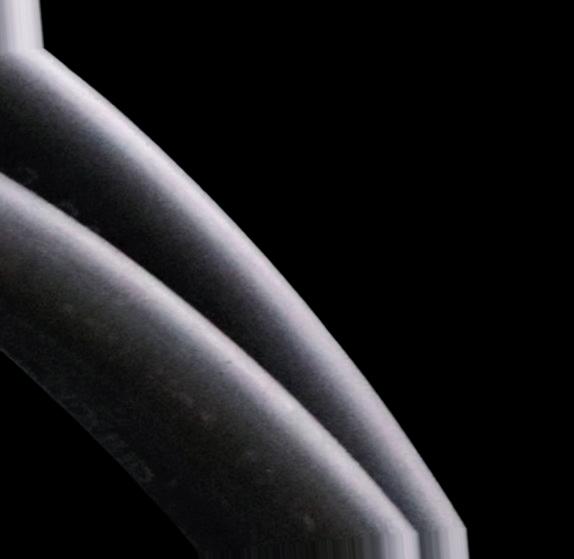























Billy Ludt • Senior Editor
Solar microgrid powers LA Clippers’ brand-new home arena
Asold-out event at the Intuit Dome in Inglewood, California, seats nearly 18,000 people. The Los Angeles Clippers and headlining musical acts regularly play within its walls, and even if the grid goes down, the dome can keep the show going, because it’s powered by a solar microgrid.
Solar PV installed on Intuit Dome’s curved roof and two neighboring parking garages produces 2.5 MW of power paired with 12 MWh of energy storage. In a grid outage, the system can power the arena for two-and-a-half hours just from stored energy.
"I've done stadiums, big convention centers, a lot of unique things," said Scott Williams, executive VP of Baker Electric, which installed the project. "We pride ourselves on taking on the hard jobs, and this was definitely a hard job."
Live from Inglewood Intuit Dome officially opened its doors to the public in August 2024, just in time for the next NBA season. As its name

suggests, the all-electric, LEED Platinumcertified arena has a rounded exterior covered in gridshell. On the rooftop, the Intuit Dome logo is prominently framed by clusters of solar modules arranged in the shape of a nautilus shell. That rooftop array is accompanied by solar carports on the south garage where coaches and players park and another separate parking deck.
Baker Electric, an employee-owned electrical and solar contractor based in Escondido, was hired for the Intuit Dome array after the first installer exited the project. Baker had spent several years on the original public bid for the solar + storage project, and was one of three remaining companies vying for the contract, but initially wasn’t selected for the job. Development carried on in the interim, so when Baker returned to the project, it was working on a shortened timeline.
This first-of-its-kind microgrid meant there weren’t exactly examples of other sports arena solar + storage setups to model from.
“You don't have any load data. You don't know what their economics are truly going to look like,” said Nick Jackson, senior director of commercial solar at Baker Electric. “You’re working with a bunch of assumptions and hypothetical analyses and not necessarily hard 15-minute green button data from years of usage — of the customer knowing exactly their energy costs.”
Baker collaborated with the project’s architects, electrical engineers and mechanical teams to design a system that would fit the Intuit Dome’s energy footprint. Then it was a matter of building the array.
“It's a very complicated project. There was really no solution for the array on top of the dome, because it's a curved surface,” Williams said.
The challenge was to find racking that could hold flat solar modules in place along a curved roof — a roof that is between a 20 to 30° slope at its edge. Forty-five days after being contracted, the company custom-fabricated an attachment
Baker Electric installed 2.5 MW of solar at the newly built Intuit Dome. Paired with energy storage, this arena has its own microgrid. Baker Electric

that would work for the roof when paired with IronRidge racking.
Baker’s electricians were just some of many tradespeople working on this new-build arena. Once the rooftop array layout was finalized, ironworkers started laying metal plates and Baker followed with solar racking. Installers placed more than 3,000 posts along the underconstruction Intuit Dome roof, which were then encapsulated in foam and covered in roof membrane. The posts had to work where they were placed, because they weren’t moving after that.
“I don't feel … people really understand [the difficulty of] trying to apply vertical posts on a curved surface that's changing, basically, two stories of elevation, across that entire dome,”
Williams said. “When you do it with something flat, that's a lot easier.”
Modules were assembled into tables at ground-level and hoisted more than 200 ft to the top of the dome. The array is composed of LG 440-W solar panels, SMA Sunny Tripower Core 1 string inverters and three Tesla Megapack 2XLs for energy storage. Baker subcontracted Teichert Solar to manufacture and install carports on the adjoining parking decks.
Building a legacy of sustainability
The same posts keeping the solar modules in place on the Intuit Dome are also holding up its sky-facing logo. When the sun sets, the lights beneath the sign illuminate the roof and the PV surrounding it.
“In the construction industry, we build a lot of nondescript properties that get used by a select few and appreciated by none,” Jackson said. “But whenever there's an opportunity to build a stadium or an arena or anything where the general public has an engagement with it on a regular basis, it's on TV, it's in the news, you now get to put your name on that for the entire life of that property.”
Since completing the project, Williams said Baker has been fielding inquiries from other sports teams about bringing solar to their stadiums. He also regularly watches the Clippers play at the Intuit Dome under the stadium lights his team helped power.
“Personally, it's definitely an iconic project of my career that I'll always talk about,” he said. SPW
The solar project atop the Intuit Dome required a specialized combination of racking and mounting components to attach to its roof. AECOM
kelsey misbrener • managing editor
The Trump Administration’s attack on renewables has rocked the solar industry this year. The full impact of anti-solar legislation and executive orders may not be fully understood until 2026, when the residential tax credit ends, material restrictions begin and start-construction deadlines arrive for the large-scale ITC.
Instead of abandoning all hope, solar advocates are shifting focus to state action.
"Federal government, Congress, they're walking away from these opportunities. But that doesn't mean there isn't an opportunity here," said Sachu Constantine, executive director of Vote Solar. "We've long made the case that the actual decisions about deployment, about what resources go into our grid, are made at the state-level."
It's not the first time strategies have shifted. During Donald Trump's first presidency, a "blue wave" in 2018 awarded many governor seats to Democrats. Solar advocates zeroed in on state policies then, mostly pushing for renewable portfolio standards (RPS) requiring utilities to add solar to their portfolios. Now, enormous data center energy demand combined with overall home electrification are creating new, urgent priorities.
"It's a more mature industry than it was back then. RPS is not really the driving factor these days," said Sean Gallagher, senior VP of policy for SEIA. "It's economics and the need for speed, and the attractiveness of solar and storage in terms of both affordability and reliability."
State budget sensitivity
HR1 didn't just decimate solar incentives. It stripped money from the states for crucial programs like Medicaid, student loan funding, SNAP benefits and school meals. States will be pressed to find money for many social programs impacted by HR1, so funding for renewable energy may be hard to come by.
Luckily, many efforts that could help reduce the overall cost of solar may not cost states much at all.
"A lot of this is not brand new, but it's sort of a renewed emphasis on these nuts and bolts, things that states really can do
to both facilitate and expedite bringing more resources online," Gallagher said.
SEIA outlines some main objectives for all solar markets in its “Post-HR1 State Policy Roadmap.” For the larger market, these include enforcing interconnection timelines by penalizing utilities not in compliance, developing "flexible interconnection" policies to bring more solar online without requiring major grid updates and streamlining requirements for solar + storage projects on state lands.
On the small-scale front, SEIA is especially focused on helping residential installers navigate a post-25D market. The group will encourage AHJs to adopt automatic instant permitting via SolarAPP+, ensure policy is in place for companies to adopt third-partyownership structures to capture the 48E ITC and work to expand statewide virtual power plant options.
"How can we really reduce cost, particularly in the residential sector, so that we can transition solar from a product that's sold to a product that's bought?" Gallagher said of SEIA’s focus.
Early state leadership
A few governors have already taken a stand to communicate that their states are still open for solar business.
"It's what we've seen historically — when there's been disruptions at the federal level, the leading states will step in and ensure that their trajectory toward their goals is at least maintained, if not further supported," said Kevin Cray, VP of existing markets and regulatory affairs at the Coalition for Community Solar Access (CCSA).
Colorado Gov. Jared Polis issued executive actions over the summer to help residents determine which renewable energy tax credits they qualify for, as well as ensure state agencies cut
red tape and prioritize renewable energy projects.
"We must provide confidence to the clean energy industry that Colorado is open for business as tariffs, shifting federal rules, supply chain crunches and market uncertainty risk delaying investment in these affordable domestic energy resources," wrote Polis in his executive letter.
CCSA worked directly with Polis' office to offer recommendations for supporting solar in the face of federal uncertainty and was pleased to see its main points reflected in the letter.
"Some of the recommendations around flexible interconnection and stuff like that were very specific, and I think create some of that near-term certainty needed for investments to still move forward," Cray said.
In Arizona, Gov. Katie Hobbs put forth an executive order in September called "Removing Barriers to Delivering Affordable Energy for Arizona," with goals of streamlining permitting and speeding energy deployment, including renewables. It establishes the Arizona Energy Promise Taskforce, which will develop plans to facilitate large-scale growth and expand Arizona’s clean energy economy.
SEIA and CCSA see these actions as great examples for other states to follow, especially Colorado's specificity.
"That's something that we're certainly running state to state with at this point — trying to get other governors, administrative agencies, etc., to take similar steps as far as some of the exact provisions of the executive action," Cray said.
Playing defense
While states that already lead on solar will continue to do so, influential utilities and oil and gas companies in others
We've long made the case that the actual decisions about deployment, about what resources go into our grid, are made at the state-level.
will be looking to take full advantage of the support of this "drill, baby drill" administration. Solar advocates will need to play defense to mitigate the damage.
"What's unfortunate in some of those red states is that the big actors — let's say the Duke [Energys] of the world, the Georgia Powers, the Southerns, FPLs — they know that solar is the best option. But they also know that in this environment, with the rhetoric coming out of the federal government, they can continue to try to cram some gas into the rate base," Vote Solar's Constantine said.
"Wherever we can, we want to get into the planning process early — the Integrated Resource Plans, where the regulators approve or shape the procurement plans for the utilities,” he continued.
Some of those negative actions are already popping up. Although Arizona's governor supports solar power, the Arizona Corporation Commission unanimously voted to repeal the state's RPS the month before she issued her executive order. And the Public Utilities Commission of Nevada recently voted to approve a new rate design that changes the solar netmetering structure to 15-minute netting and adds mandatory demand charges to all customers. Instead of balancing solar production against usage over a full month, customers will now only get credit for excess energy within each 15-minute window. SEIA said the decision "discourages private investment in reliable, affordable, clean energy at a time when the grid needs every electron it can get to power Nevada’s economy."
Still, the country needs massive amounts of new energy on the grid, and it needs it quickly. The U.S. Energy Information Administration is forecasting continued average electrical consumption growth of 1.7% through 2026, after growth was nearly flat from 2005 to 2020. Solar has consistently been the fastest-growing source of electricity to meet that demand. Advocates plan to cut through the presidential administration's rhetoric and stick to those facts to win as many policy battles as possible in this trying time.
"We have to bring a real clear focus now on the economic proposition that solar provides and the speed to power that we can do. We have our work cut out for us. But, as you saw at RE+, I think the industry feels like we're going to figure out a way to manage through this," Gallagher said. SPW




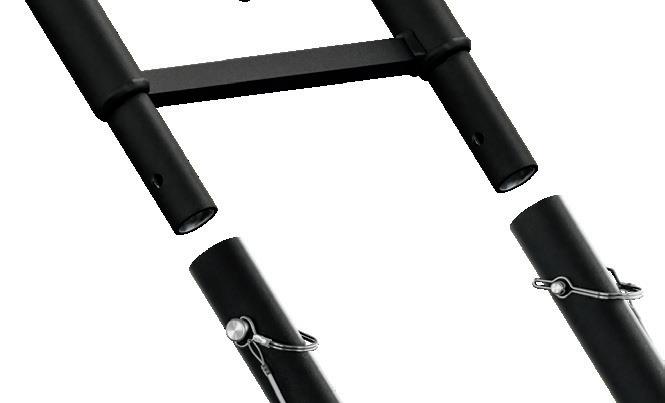
• Fast and easy placement with 7" scratch resistant wheels.
• Head adjusts for pitches 7/12 to 18/12. Folds flat for easy storage.
• Lengthen by adding 6' ladder sections. 12" rung spacing.
• Fully OSHA compliant when using a proper safety harness.
• 3" toe engagement. Replaceable rubber bumpers.
• Powder-coated aluminum construction.

KELLY PICKEREL EDITOR IN CHIEF

The topic of critical minerals is common in the news lately, especially when parsing the latest escalations in the U.S.-China trade war. When the U.S. government imposed high tariffs earlier this year on Chinese goods, China responded by placing export restrictions on certain crucial metals. One of those metals is tellurium, a rare element needed for cadmium-telluride (CdTe) thin-film solar
panels, and which China controls 75% of global supply.
While silicon-based solar panels are overwhelmingly the dominant choice installed globally, thin-film makes up nearly one-quarter of U.S. manufacturing capacity, thanks to First Solar’s three manufacturing hubs in Ohio, Alabama and Louisiana. First Solar is the largest — and, essentially, the only — CdTe thin-film
manufacturer in the world, with additional solar panel factories in India, Malaysia and Vietnam. The company deposits cadmium and telluride on glass to produce efficient solar panels predominantly used in the utility-scale market. Although not the largest market-holder globally, First Solar’s CdTe solar panels are important to the U.S. market and make up a significant chunk of its installed utility-scale capacity.
Panel Technology

That’s why export restrictions on one of CdTe thin-film’s key ingredients could pose problems for CdTe manufacturing if the trade war continues. Here’s what we know about the world’s supply of tellurium, and how First Solar is navigating the market.
Global supply of Te
Tellurium (Te) is a rare metallic chemical
element first discovered in the late 1700s in a Transylvanian gold mine. The element is named after the Latin word tellus meaning “Earth,” and it is considered one of the rarest stable solid elements in the Earth's crust. The United States designates certain elements as “critical” due to their high risk of supply chain disruption and importance to energy production, and Te is on the list
along with silicon, lithium and cobalt. Te is typically found as a “telluride,” combined with other elements.
The world’s supply of Te is largely recovered during copper refining, and treatment of 1,000 tons (2 million lbs) of copper ore yields approximately 2.2 lbs of tellurium. The world’s supply of tellurium is mainly used in CdTe solar panels and other thermoelectric devices.
Copper mining at Kennecott and Bingham Canyon Mine in Utah. Rio Tinto
Panel Technology
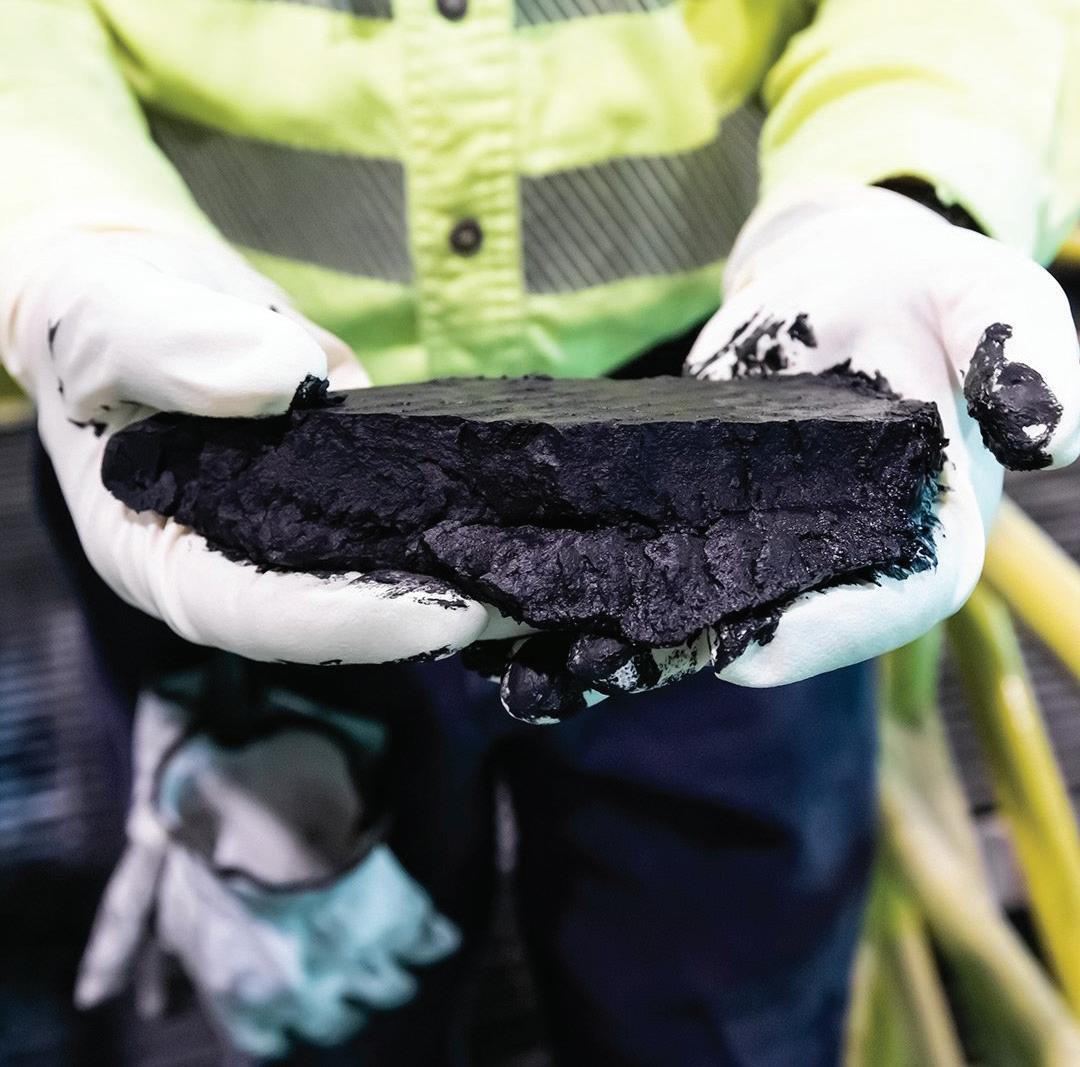
Since tellurium is recovered by mining copper, the Te supply for solar panels depends on a stable demand for copper. A 2022 article in the journal Resources, Conservation & Recycling estimated the maximum annual recovery of tellurium from copper refining at 1,930 metric tons. A U.S. Geological Survey report from January 2025 determined that 980 metric tons of Te was produced in 2024 — excluding U.S. production from two copper refineries that produce small amounts of Te.
A 1999 report prepared by World Industrial Minerals for NREL estimated that between 90 and 130 metric tons of tellurium is necessary for 1 GW of solar panels. Based on improved manufacturing efficiencies and processes over the last
25 years, the Resources, Conservation & Recycling article put those numbers closer to 57 metric tons needed for 1 GW of panels.
First Solar expects to have nearly 21 GW of global manufacturing capacity by the end of this year — 14 GW in the United States and 7 GW across Asia.
A review of that math: First Solar can make 21 GW of solar panels annually. The world only produced enough tellurium in 2024 to make 17.1 GW of solar panels. The maximum amount of tellurium the world could refine each year would produce 33.8 GW of solar panels — but China controls 75% of Te supply.
Could the solar industry be at risk of a Te shortfall?
A
critical time for solar panel production
Although First Solar doesn’t appear to be slowing down its production — the company is sold out through 2028 — the scientific community has been anticipating a Te shortage for years.
A 2011 New Scientist article stated that the Dept. of Energy expected a Te supply shortfall by 2025. North American mineral company First Tellurium (formerly known as Deer Horn Capital) predicted in 2018 that changes in copper recovery and refining would affect tellurium availability, forcing refiners to look at gold and silver for worthwhile tellurides.
First Solar refrained from providing Solar Power World with comments on its telluride supply chains, but public announcements from the last few years do show that Te and other critical mineral supplies have been front-of-mind for “America’s Solar Company.”
An obvious big move is First Solar’s expanded relationship with First Tellurium, whose advisory board is peppered with former First Solar executives. First Tellurium is developing a project in British Columbia that is the only known property in North America with a resource for silver-gold-tellurium. The company is also exploring the prospect of tellurium in Colorado, where sampling at a site southwest of Denver found the highest tellurium grades in a nationwide exploration program.
Rio Tinto has mined copper from its Kennecott operation in Utah for over 120 years and began producing tellurium for First Solar there in 2022. The site likely contributes enough Te for less than 1 GW of First Solar panels annually, but any domestic supply is welcome.
First Solar has also long focused on solar panel recycling, which will help with available tellurium levels. The company has operated recycling plants at its manufacturing facilities since its first days, First Solar global recycling director Sukhwant Raju told Solar Power World in 2018.
“There is a finite amount of tellurium,” he said. “They wanted to make sure there was a way to recover the valuable stuff so it becomes sustainable growth for First Solar. It’s
A copper telluride filter cake at the Kennecott tellurium plant. Rio Tinto
not just about being green, but how do we stay sustainable in the long-term?”
A First Solar environmental report from 10 years ago estimated that 12.5% of its Te supply came from recycled materials — a number that has undoubtedly increased in the last decade with improved recycling efforts and more recycled panels entering the circular economy. The company also says that 1 kg of telluriumbased semiconductors can be recycled 41 times — producing clean energy for over 1,200 years beyond its initial solar panel iteration.
So, could there be a Te shortage, especially if China restricts exports of the valuable metal? It’s possible there may be less “new” tellurium available for CdTe solar panels if mining efforts stay the same while demand for First Solar panels increases. But First Solar has been taking steps to avoid this dire situation, whether through new mining endeavors or improved recycling processes.
America’s top solar panel producer will probably be just fine. SPW
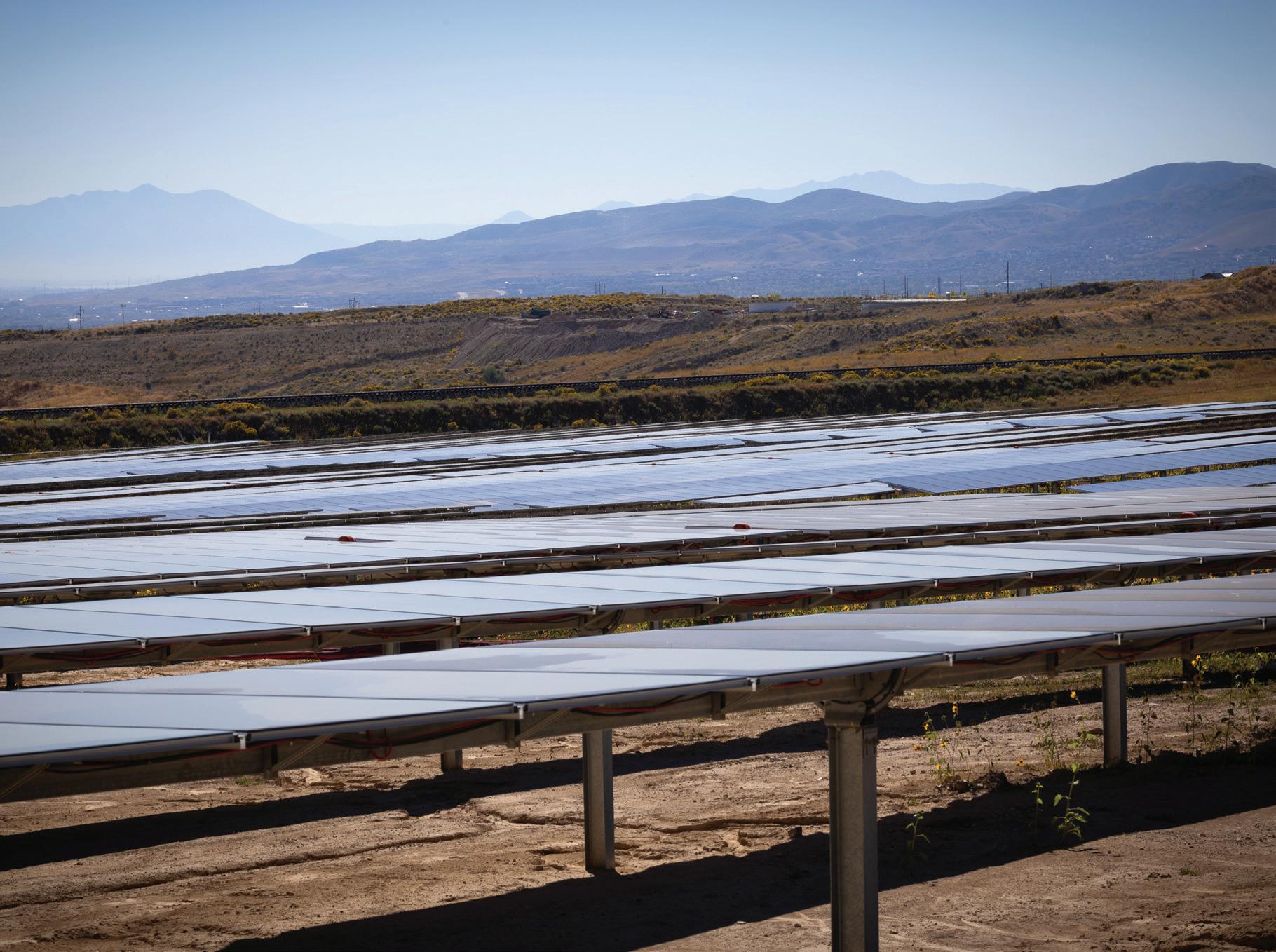



Rio Tinto installed First Solar CdTe solar panels outside its Utah copper mine. Rio Tinto
Kelsey Misbrener • Managing Editor
EG4 meets the moment in solar with budget-friendly off-grid products

Catching the solar industry's attention sometimes means spending money on an enormous booth at RE+. Other times, word of mouth can bring a brand to the forefront without too much flashy marketing.
Hybrid inverter + battery storage manufacturer EG4 Electronics is one of those companies the residential solar industry can't stop talking about right now — and the transformation from a modest, far-flung RE+ booth in 2024 to hefty square footage in the main exhibit hall in 2025 reflected that come-up.
"They weren't really on my radar, and then I just kept hearing people ask about it, ask about it, ask about it. So then it makes you go, 'OK, well, what is this?'" said Gage Mueller, senior energy consultant at Texas-based Solstice Solar.
EG4 and its parent company Energy Access Innovations (EAI) were created in rural Sulphur Springs, Texas, by CEO
started his solar journey in the DIY community, installing a fully off-grid system on his family's home in 2013. From there, he opened a long-tail solar installation company in West Texas. Ever the entrepreneur, he gave the company to one of his brothers to start a new endeavor — a solar product distribution company called Signature Solar that sold the products he wished he had access to at his installation firm.
Focusing on the DIY market meant fielding many questions from homeowners, so Signature established a call center with NABCEP-trained customer representatives.
"We were taking over 10,000 consultative phone calls a week with people building systems. The idea for an OEM new-generation storage manufacturer came within the first year," Showalter said.
He and his team noticed many of the residential solar products on the market weren't the best fit for its customer base. Many were tailored to the customers in the largest solar state of California — homeowners with relatively low energy demand, high energy prices and decent net-metering rates to sell power back to utilities (prior to NEM 3.0).
"When you define the problem by that market, it becomes irrelevant to the rest of the country, because the energy costs are much, much higher in California than the rest of the country, and people use less energy, so you end up with higherpriced hardware that isn't designed to put out high power," Showalter said.
So he set out to create a product that would work for a market like his hometown in Texas — high energy demand, lower but rising energy costs, and little to no incentive to export power to the grid.
James Showalter. Showalter
Workers assemble EG4 inverters at its factory in Commerce, Texas. EG4 Electronics
Partnering with a Chinese OEM called LuxpowerTek, in 2020 Showalter launched EG4 — which stands for "energy generation for everyone" — to close that gap he saw in the market. EG4 makes hybrid inverters such as the FlexBOSS, the 18k and 12k, as well as wall-mounted batteries. Showalter's DIY roots mean the products are designed with the off-grid solar customer at front-of-mind.
"We're an off-grid system that [was] designed to hook up to the grid. Most of the systems out there are grid-tied systems that they're trying to go back and add off-grid functionality to," he said. "Our inverter, for instance, can start a five-ton air conditioner right out of the box. That's not even a design protocol for most of the other battery ESS providers."
Installer experience
EG4 isn't the first to prioritize the off-grid or hybrid solar customer, but installers having issues with other manufacturers have found success with the company.
"The companies that I was using before, their service seemed to tank around the time EG4 was coming out, and EG4 service has been pretty spoton," said Rudy Wright, CEO of East Texas installer Wright-Way Solar Technologies.
The first generation of EG4's products weren't UL-rated or grid-interactive, and they also had quality issues, according to Wright and Landon Liles, VP of operations for West Texas Solar. But the installers say the company has addressed those problems in its current models.
"The RMA (return merchandise authorization) process is super simple on the very few issues that we have had with the inverters. But the batteries have been, I would say, foolproof," Liles said.
Aside from reliable service, the biggest draw of EG4 has been the low prices.
"Their 14-kWh battery hit the market at one-third of the price-per-kilowatthour of the one I was selling prior to that," Wright said. "I was willing to sell American-made at a 20 to 30% premium. But by the time you're at a 66% premium … I have to get off the boat of Americanmade and jump into China import."
West Texas Solar has had nearly 100% battery attachment rates on solar jobs for the past two years, with customers wanting more backup power as utilities pivot away from export compensation. EG4’s larger, low-cost battery checked those boxes.
"We realized that grid-tied-only was not working out for them, and assuming that utilities are going to buy your power back is a wrong assumption," Liles said. "We needed bigger battery banks that don't cost an arm and a leg."
Now, West Texas Solar is installing at least two EG4 outdoor-rated batteries on every job.
“Having it truly outdoor-rated allows us to take up a lot less space in the garage or on the walls, and we can put it under our ground-mounts, or kind of get creative with our placement of the batteries," Liles said.
The user-friendly elements of EG4's products are another selling point for West Texas Solar. Homeowners can click a button for pre-loaded settings that meet


EG4’s wall-mounted battery and hybrid inverter are gaining popularity in the residential market.
Inverter Technology
their needs, including nighttime battery use or self-consumption.
"From the installation to the commissioning to the support in the design, it's been good, and I hope it stays that way," Liles said. "I know that they are continually adding new products, and I hope there's compatibility with old products to new products. People want to add on to their systems — hopefully that all meshes well and it doesn't get too software-heavy."
2026 plans and FEOC
As the end of the 25D residential ITC approaches this year, budget-friendly solar products like EG4’s are only going to become more important.
"With the tax credit going away, with homeowners not wanting to rely on the grid anymore — now this is an affordable option, even without the tax credit," said Mueller of Solstice Solar.
At the same time, more residential installers may turn to third-party ownership financing structures to claim the 48E ITC — and will need to comply with foreign entity of concern (FEOC) requirements limiting products from China and other countries.
EG4 is working on options for both categories of installers going into 2026.
"A lot of companies are going to raise the price for higher FEOC compliance, and they're going to douse their 25D folks. We created a dual solution," Showalter said.
Last summer, EG4 opened a 310,000ft2 manufacturing facility in Commerce, Texas, to start assembling product in the United States. The company also acquired U.S. off-grid solar manufacturer OutBack Power to “combine OutBack’s legacy of engineering excellence with EAI’s global resources.”
In the fall, EG4 formed a supply partnership with LG Energy Solution to purchase 13.5 GWh of Michigan-made battery cells through 2030 that it will
Refined Features for Extremely Secure Cable Support
assemble into batteries at its Commerce facility for a "hyper-compliant" product, to be paired with its next-generation inverter. The company will still have Chinese batteries available for installers looking for cheaper options and not concerned with FEOC restrictions.
“We have a unified home EMS inverter and energy management platform, but we have a domestic content battery that's rigorously compliant that we can bolt on, or we have a Chinese battery,” Showalter said.
Despite its humble DIY-focused beginnings, EG4 is becoming a recognizable name in solar during this time of slashed federal incentives and waning utility compensation.
"I think that's what they initially started doing, was off-grid, and that's what their passion was. And they still carry that with them, but have realized that they can compete with everybody else too," Liles said. SPW





Billy Ludt • Senior Editor

Commercial solar racking goes beyond steel and aluminum
Commercial rooftop solar projects are built predominantly on metal racking, whether ballasted in place with concrete or mechanically attached to the roof. However, other types of materials have proven to be viable as the primary racking structure for flat-roof applications.
Some manufacturers have shifted away from extruded metals into specialty molded plastics or even incorporating concrete, which would traditionally be a ballast, into the racking itself.
Sun Ballast brought its proprietary concrete-racking technology to the United States in fall 2023. The company was founded in 2011 by Maurizio Iannuzzi, an Italian solar contractor, after he sought a simpler solution for the complicated flatroof market in Italy.
“He came up with the idea to integrate ballast and racking into this single component and actually started manufacturing it for himself, so he could install it and be more efficient,” said Edoardo Brignoli, CEO of Sun Ballast USA. “In the mornings, he was manufacturing
racking, and in the afternoon, he was installing them.”
The product Sun Ballast is a system of threes: it comes in three orientations (flush-mount, east-west and a 5 to 10° south-facing tilt), with three components (the concrete ballast-racking, a rubber mat to lay under and clamps to mount the modules) and in three weights (32, 64 and 96 lbs).
What makes Sun Ballast different from off-the-shelf concrete is how it’s cured. The concrete has a 5,000-psi mix, which is standard for use in weight-bearing construction projects.
“People learn the hard way that not all concrete is created equal,” Brignoli said. “It is not uncommon for us to run into jobs where installers or EPCs are having to go on a roof 10 years later, after the initial install, and basically scoop up sand, which used to be block at one point, but broke down with freeze-thaw over the years.”
The company is targeting the Northeast as a testing ground for Sun Ballast to prove it can withstand the region’s winters.
“We thought, ‘If we can figure out New England, we can pretty much figure out the rest of the country,’” he said. Sun Ballast is cast domestically, and since concrete is non-conductive, it is awaiting approval for UL 3741 compliance — which would allow contractors to satisfy fire safety requirements without installing rapid shutdown devices on the roof.
Plastic, polymer and fiberglass racking
DynoRaxx first entered the solar mounting market in 2007 with a steel racking structure, but company reps found the assembly to be cumbersome. In 2011, it introduced a racking made from a proprietary molded fiberglass compound. DynoGrip Evolution Flat Roof System is a ballasted racking that is installed without using any tools.
Fiberglass material means the racking isn’t affected by thermal expansion like its metal counterparts. DynoGrip has been installed in regions with high sun
FastRack, a glass-reinforced nylon solar racking from Sollega.
Mounting Technology

exposure, and is UV- and fire-resistant, meeting the UL 2703 rating. The racking elevates ballast blocks half an inch from the roof for air circulation and water drainage.
“In most instances, where solar was a retrofit into a building that’s been existing, they don’t really take into account placing modules and how much that affects drainage on the roof,” said Nathan Rizzo, who invented the racking. “We’re not damming or stopping the natural flow of water on the roof.”
In its 14 years on the market, DynoGrip has only undergone one change, which removed fiberglass rails and replaced them with tool-less clamps pinned to the upward supports for mounting modules.
“It speaks pretty well to the product that we initially designed and our goal with it — that it really was the evolution of solar and it didn’t require a lot of iterations,” Rizzo said.
DynoGrip racking is manufactured to be stacked on one another and palletized for simpler logistics.
FastRack, a modular rail-less racking from Sollega, uses a similar method for shipping. The first model of FastRack that launched in 2012 used a high-density polyethylene in the rail-less, modular racking before switching to glassreinforced nylon 6 in 2014.
“If you go and look under the hood of your car, you’re going to see some components that actually are made out of the same material,” said Elie Rothschild, CEO of Sollega. “The reason being is its
expansion-contraction is minimal, and it has a very high heat stability.”
FastRack is composed of the primary rack, or bucket, which can house ballast blocks or mechanically attach to the roof; then there are bolts, which are placed at locations for 5, 6 or 10° panel tilts; panel clamps; and slide-on bonding jumpers. The lightweight buckets can hold up to 1,700-lb loads.
Glass-reinforced nylon has an operating lifespan of between 40 and 50 years, and it is fully recyclable. Rothschild said Sollega is considering using post-industrial recycled materials to
manufacture its racking, which already has a smaller carbon footprint than extruding metals. Additionally, glassreinforced nylon is non-conductive, so FastRack earned UL 3741 compliance by default.
Non-traditional materials like concrete, fiberglass and glass-reinforced nylon present certain advantages for commercial solar logistically and for ease of installation by keeping component counts low. Metal remains the popular choice for flat-roof projects, but other racking options give installers alternative approaches to solar construction. SPW

DynoGrip Evolution Flat Roof System from DynoRaxx.
Concrete solar racking from Sun Ballast.
Kelly Pickerel • Editor in Chief
Cutting through the noise: Designing batteries for community acceptance
The NIMBY arguments against solar and storage range from the absurd (solar panels suck up all the energy from the sun!) to the indisputable (projects alter rural landscapes). Regardless of the opinion, it’s the priority of the solar + storage developer to hear community concerns and find solutions. One logical issue community members may have with large-scale battery energy storage systems (BESS), especially as more are being installed in urban areas, is their noise level. Residents will be living and working near these systems long after the project developer moves on to the next site.
It's a valid concern, said Thomas Corbishley, principal consultant for acoustic consulting company Noise Monitoring Services.
“Sites using the loudest equipment can generate noise levels of 70 dBA at 50 ft from the batteries. This level is well above typical permissible sound levels for residential areas,” he said. “For a comparison, freeway noise is typically 70 to 80 dBA at the same distance. However, roadway noise is less intrusive as it is broadband in nature — [meaning that] road noise is not tonal like BESS equipment can be.”
The “noisiest” components of a BESS are typically the cooling systems, inverters and transformers. A BESS’s cooling and ventilation system includes noise-making fans and pumps, which operate frequently. Solar installers are familiar with inverter noise, which is more of a consistent buzz that can be noisier on a larger installation. Transformers also create a low-frequency hum that is still notable.
“For large shipping-container-sized batteries, we've measured noise levels up to 92 dBA at 1 meter from the fans,” Corbishley said. “The fans often produce a humming sound. This type of tonal noise can be very intrusive and annoying to people.”
But there are ways these energy storing noise-makers can be designed to limit their acoustic annoyances, both during manufacturing and project siting. The earlier noise mitigation steps are taken, the more acceptable a BESS will be to a community.
A battery is only as noisy as its parts Sharon Santhosh, application engineer at global BESS integrator and designer Wärtsilä Energy Storage, said questions around battery noise have increased in recent years.
“Five years ago, acoustic studies were occasional; now, nearly every project includes noise criteria,” she said. “Local authorities and nearby residents are becoming more aware of operational noise and its effect on quality-of-life and community wellbeing, so noise is now a limiting factor for permitting and community acceptance. We see stricter thresholds, especially for nighttime, often 30-40 dBA at the nearest home and 70-90 dBA at the unit, which makes early-stage noise modeling essential.”
BESS are typically at their loudest at night, when batteries are actively working and cycling. This is the opposite of when other ambient noise sources like road traffic are at their loudest levels, which can add to their nuisance.
Since Wärtsilä has some control over the manufacturing of its Quantum energy storage systems, the company can customize acoustic performance to meet project requirements. For example, enclosures can be designed to use high-quality wall materials and properly sealed access points to prevent sound leaks. Santhosh said the company can also incorporate noise silencer kits and anti-vibration materials and pads

Conscious efforts at BESS noise mitigation can be taken at both the manufacturing and project design phases. Wärtsilä Energy Storage
Storage Technology
Predicted noise levels at a BESS facility before (top) and after noise mitigation efforts (bottom).
Noise Monitoring Services

between the base and equipment to stop mechanical noise transfer. Wärtsilä’s GEMS optimization software can adjust fan speeds depending on system needs that can assist with noise levels at different times of the day.
Corbishley with Noise Monitoring Services said these small tweaks can do a lot to help with noise pollution.
“We've performed tests that demonstrate running the battery fans at 70% of their standard operating speed reduces sound levels by 4 or 5 dBA — a noticeable reduction,” he said. “At one site we worked on, the fan speed could be reduced to 50%. This typically reduces sound levels by 10 to 13 dBA, which is a very significant reduction.”
The type of BESS used can also influence noise levels. Transitioning to liquid-cooled systems uses fewer fans, which diminishes some noise. The timeduration of a system also determines noise levels, said Martin Rheault, VP of business development and sales for North American BESS integrator EVLO Energy Storage.
“The use-case of a specific BESS project also plays a role — whether the system delivers lower power over a long period (four or eight hours) or higher power over a shorter timeframe will
“These systems typically operate at lower power output over extended periods, which reduces the need for intensive cooling by HVAC equipment, and therefore results in lower acoustic impact of those energy storage projects,” he said.
Being a courteous neighbor EVLO has found noise requirements to be just one community factor increasing on BESS siting — along with fire safety, property value impacts and wildlife considerations.

influence cooling needs and its noise levels,” he said. “The more power, the more cooling required, the greater the sound output.”
Rheault said the trend toward longer-duration energy storage (systems operating at more than eight-hour intervals) will decrease noise levels too.
“Responsibility for minimizing these impacts is shared between the BESS provider and the project owner,” Rheault said. “While the provider integrates these considerations into system design, the project owner can also plan for optimal site selection and mitigation strategies. Together, this ensures that energy storage remains a solution with minimal footprint on surrounding communities, while optimizing the benefits of BESS as flexible energy assets.”
Murray Stacy, VP of Sound Fighter Systems, a provider of outdoor soundabsorbing products used in industrial and commercial settings, said his company has been called to more

Storage Technology
BESS sites lately. Its SonaGuard system is designed for maximum acoustical performance and long-term outdoor exposure and mitigates BESS site noise. Instead of treating source-specific noises at a battery project, the SonaGuard absorbs sound from all areas.
“Many people’s first exposure to sound walls has been with highway sound walls, which were traditionally sound-reflective concrete, but have now progressed to the more advanced sound wall components found in products like our SonaGuard barrier system,” Stacy said. “The SonaGuard sound panels are tuned to mitigate the most common frequencies associated with the noise sources on BESS sites, in addition to many other outdoor noise sources such as electrical substations, power generation and data centers.”
The consultants at Noise Monitoring Services have conducted surveys at many existing BESS projects, primarily in California and Arizona. When changes can’t be made to the manufactured
product itself, Corbishley said the most common noise mitigation options his company suggests is installing sound walls like Sound Fighter Systems’ SonaGuard. Re-orienting equipment to direct sound away from the nearest residences can also make a big difference. HVAC systems are typically only on one side of a BESS, so they can be oriented away from nearby housing. Additionally, increasing space between battery units and sensitive areas can reduce perceived sound.
“While the biggest gains come from mitigating noise at the source, installation and site layout are crucial parts of acoustic mitigation,” said Santhosh with Wärtsilä. “Mechanical isolation between the unit and its foundation can prevent vibration from amplifying noise. Orientation also matters by facing inverters or ventilation outlets away from nearby receptors and spacing containers to allow for sound dissipation; overall noise exposure can be reduced significantly.”

SET SCREW ALTERNATIVE


As more BESS projects are installed across the country and in more urban settings, Stacy with Sound Fighter Systems said acknowledging community concerns will go a long way.
“Transparency, empathy and community buy-in from the start is a prudent strategy,” he said. “Too often, noise is an afterthought without any budgetary considerations, then site owners try to Band-Aid the problems with the cheapest treatments possible. Such remedies seldom resolve the noise issue and often agitate the community due to the owner’s perceived lack of empathy, lack of knowledge or both.
“Instead, deploy aggressive and progressive pre-emptive noise mitigation tools, and share with the community that you are proactively utilizing the best technology available on their behalf,” Stacy continued.
Noise levels should be considered at every step of BESS deployment — initial manufacturing, project design and long-term operations.
“Designing for low noise isn’t just about compliance; it’s about building community trust and ensuring energy storage remains a welcomed, longterm part of the local environment,” Santhosh said. SPW

Financing for everything under the sun.

At First Horizon, we offer the best of big bank capital resources and small bank client relationships through a dedicated team of renewable energy finance specialists. If you’re looking for project debt and tax equity financing for solar, wind, or battery storage renewable energy projects, we’ve got you covered with a tailored package of cash and capital solutions that help you build bottom-line confidence and accelerate top-line growth.
Big bank muscle. Small bank hustle.
Minimize upfront investment
Optimize cash flow
Enhance productivity
Learn more at firsthorizon.com/renewable


Downtime Costs Thousands. Find Ground Faults in Minutes.

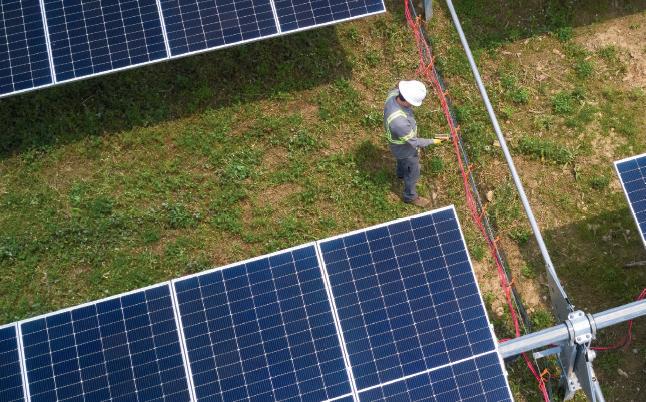

The Fluke GFL-1500 Solar Ground Fault Locator

Meet the Fluke GFL-1500 Ground Fault Locator Fast, Safe, and Built for 1500 V Systems
Every minute offline costs you. The Fluke GFL-1500 FaultTrack™ Technology, sends a traceable signal straight to the fault. No guesswork, fewer disconnects, and faster fixes. Don’t Guess. Trace It.



Pinpoint faults fast with non-contact tracing Work safer with fewer disconnects Restore production with confidence

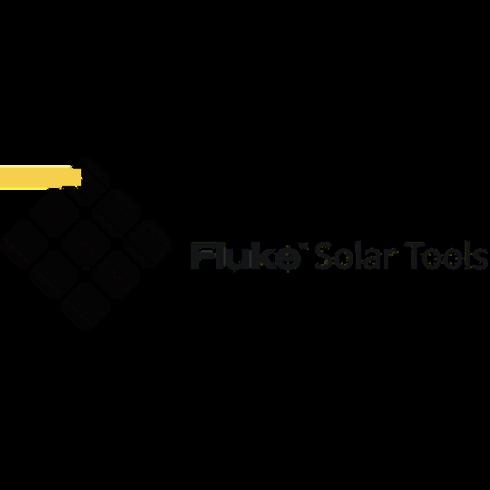

Fluke PV Solar Testing Solutions





The end of each year brings the opportunity to reflect on the accomplishments of the last 12 months, and we're reflecting on the products that made exceptional installations happen. Solar Power World is proud to unveil this year's winning class of Top Products for the solar and storage industry. The 2025 Top Products contest celebrates the most innovative and significant products available to the U.S. market that are making a difference to the industry today. The competition
was judged by industry professionals with experience in all markets, representing the research, product development and installation sectors. Products were assessed on their originality, market promise and benefits to installers and developers.
Following two market tracks — largescale and residential — five products were awarded Best in Show. These products received the highest scores from our judges, who awarded points based on each product's purpose, development and real-life application. Five additional
products in each market track were awarded Honorable Mentions based on their performance.
Biographies of our 2025 judges are on the following pages. Solar Power World thanks them for their dedication to a fair competition. Judges with a direct connection to a submitted product were prevented from ranking the product. The product's score was averaged without the conflicting judge's input.
Congratulations to the 2025 Top Products presented by Solar Power World!
RESIDENTIAL JUDGES
Charlie Saginaw, Southwest Regional Sales Manager, JA Solar


Charlie Saginaw, a University of Texas at Austin graduate and native Texan, has excelled in the solar industry for nearly a decade, specializing in solar installer and distribution sales. He is currently the Southwest regional sales manager for solar panel company JA Solar. Previously, Charlie held positions at BayWa r.e., CivicSolar and was the first sales hire at Bodhi in 2022. Charlie’s career highlights his commitment to relationship building, market share growth and reliability through proactive communication. Charlie is also an avid cyclist and once biked 4,600 miles in one summer, traveling from Austin, Texas, to Anchorage, Alaska, to raise money for cancer research.
Will White, Solar Application Specialist, Fluke Corp.
Will White is a seasoned professional in the renewable energy sector, with two decades of experience spanning installation, sales, design, project management, curriculum development and teaching. Since 2022, Will has served as a senior application specialist at Fluke, supporting the company’s renewable energy testing portfolio. His technical area of focus is distributed energy resources, including energy storage, electric vehicle supply equipment and PV systems of all scales. Will has been a NABCEPcertified PV Installation Professional since 2006 and previously held certification as a NABCEP Solar Heating Installer. He holds a B.A. in Business Management from Columbia College Chicago and an MBA from the University of Nebraska-Lincoln.
LARGE-SCALE JUDGES

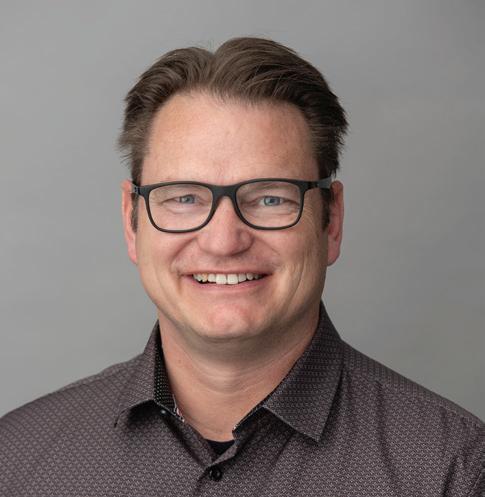

Emily Hwang, Director of Applications Engineering, Yaskawa Solectria Solar
A seasoned professional of almost 20 years, Emily Hwang has been part of Yaskawa Solectria Solar for the last decade and currently holds the role of director of applications engineering. Emily has a passion for applying the NEC and ensuring that all PV products are installed correctly, efficiently and, most importantly, safely. A graduate of the University of Pennsylvania, Emily earned a B.S. in Electrical Engineering and a master’s in Telecommunications and Networking. She is a NABCEP-certified Solar PV Installer and has served on many committees and boards including Women in Cleantech and Sustainability and Engineers Without Borders. Speaking at least four languages, Emily is an outstanding solar communicator and trainer, presenting at many industry events and functions throughout the years.
Ben Jones, VP of Design and Engineering, DSD Renewables
Ben Jones has had a variety of experiences spanning over 30 years in different industries and currently serves as SVP of technical sales and account management for DSD Renewables. Ben feels that the depth and variety of his professional track record has prepared him well to leverage that experience in developing a solar market penetration strategy and executing the tactical steps necessary to ensure lasting success. He was a part-time NABCEP instructor at Red Rocks Community College in the early 2010s and held positions at CPV, S:FLEX and GE Solar before coming to DSD Renewables in 2019. A member of DSD's executive team, Ben works across the organization to ensure build scale-ability, sustainability and exceptional value.
Troy Renken, VP of Product and Engineering, Shoals Technologies Group
Troy Renken is the VP of product and engineering at Shoals Technologies Group. He brings extensive leadership experience in engineering and product management across a range of industries. Over the course of his career, Troy has held senior roles at Shoals Technologies Group, Hayward Holdings, Medical Enterprises Distribution, ZPower and Emerson Climate Technologies. His technical expertise spans mechanical, electrical, firmware, software, chemical and hydraulic engineering, and he has led multidisciplinary teams to deliver innovative product solutions. Troy holds a B.S. in Electrical Engineering from Trine University.
SOLAREDGE – SINGLE-SKU HOME HUB INVERTER
The top-ranked product for the residential market as chosen by our judges is the single-SKU Home Hub inverter from SolarEdge, which just hit the market this year.
The Home Hub itself is SolarEdge’s legacy residential inverter offering, but the latest version has an almost fool-proof commissioning process. The inverter can be configured to any required size (3.8, 5.7, 7.6, 9.6, 10 or 11.4 kW) while maintaining 12.5 kW of continuous power output across all configurations. The nameplate rating is permanently locked during commissioning through simultaneous scanning of two QR codes. The five-step commissioning process ensures proper configuration: The installer first downloads the SolarEdge Go app, then installs Home Hub, commissions through dual QR code scanning to configure nameplate rating, applies the appropriate nameplate sticker and finally exports the commissioning report.
This latest Home Hub also allows for system upgrades, and homeowners can add more solar panels later without purchasing a new inverter, subject to utility approval for power class changes. But all that ability is already baked into the single-SKU offering.

This provides a dramatic simplification of an installation company’s inventory. Instead of stocking multiple inverter sizes, only one unit is needed. This also eliminates costly change orders. And the system’s future-proof option allows for easy system expansion.
While other solar products do offer single-SKU solutions, SolarEdge says its approach is fundamentally different due to the dual QR code scanning, which prevents errors and allows for verification and traceability. This updated function came straight from SolarEdge’s installer and distributor network. Select installation partners participated in controlled field trials to validate the technology before it was fully released earlier this year, and the response has been extremely positive, as evident by this Best in Show win. SPW

“One of the many challenges of residential solar installations is managing the correct inventory of inverters. They come in many different sizes, and you must make sure you have the right one for the job. A huge advantage of the SolarEdge single-SKU inverter is a significant reduction in part count. This makes it much easier for installers to ensure they have the right inverter on site. Having fewer part numbers simplifies inventory, which reduces costs.”
– Will White, judge
ENPHASE ENERGY – 4TH-GENERATION ENPHASE ENERGY SYSTEM
The solar industry’s microinverter expert has also figured out residential storage, and the fourth-generation of the Enphase energy system has been awarded a Best-in-Show distinction in this year’s Top Products competition.
This latest streamlined package from Enphase consists of three key components: the IQ Battery 10C, IQ Meter Collar and IQ Combiner 6C. Together, they simplify design and installation while providing whole-home backup and long-term reliability.
The 10-kWh LFP battery has 7.08 kW of continuous power output, and a

redesigned internal architecture achieves 34% greater energy density while reducing wall space requirements by 62%, compared to earlier generations, giving homeowners more storage in less space. The IQ Meter Collar installs behind the utility meter to enable whole-home backup without the need for a separate backup sub-panel. The IQ Combiner 6C integrates interconnection equipment, pre-installed current transformers and breakers into one enclosure, consolidating multiple functions and reducing installation steps.
The fourth-generation system addresses two big challenges slowing
residential storage adoption: Installation complexity and space limitations. By consolidating functions and eliminating unnecessary hardware, the system reduces labor requirements, minimizes wall space and makes whole-home backup achievable without costly or time-consuming workarounds.
To further strengthen market appeal, the IQ Battery 10C began shipping with domestic content from contract manufacturing facilities in August 2025. Every system is backed by a 15-year Enphase limited warranty for long-term peace of mind. SPW
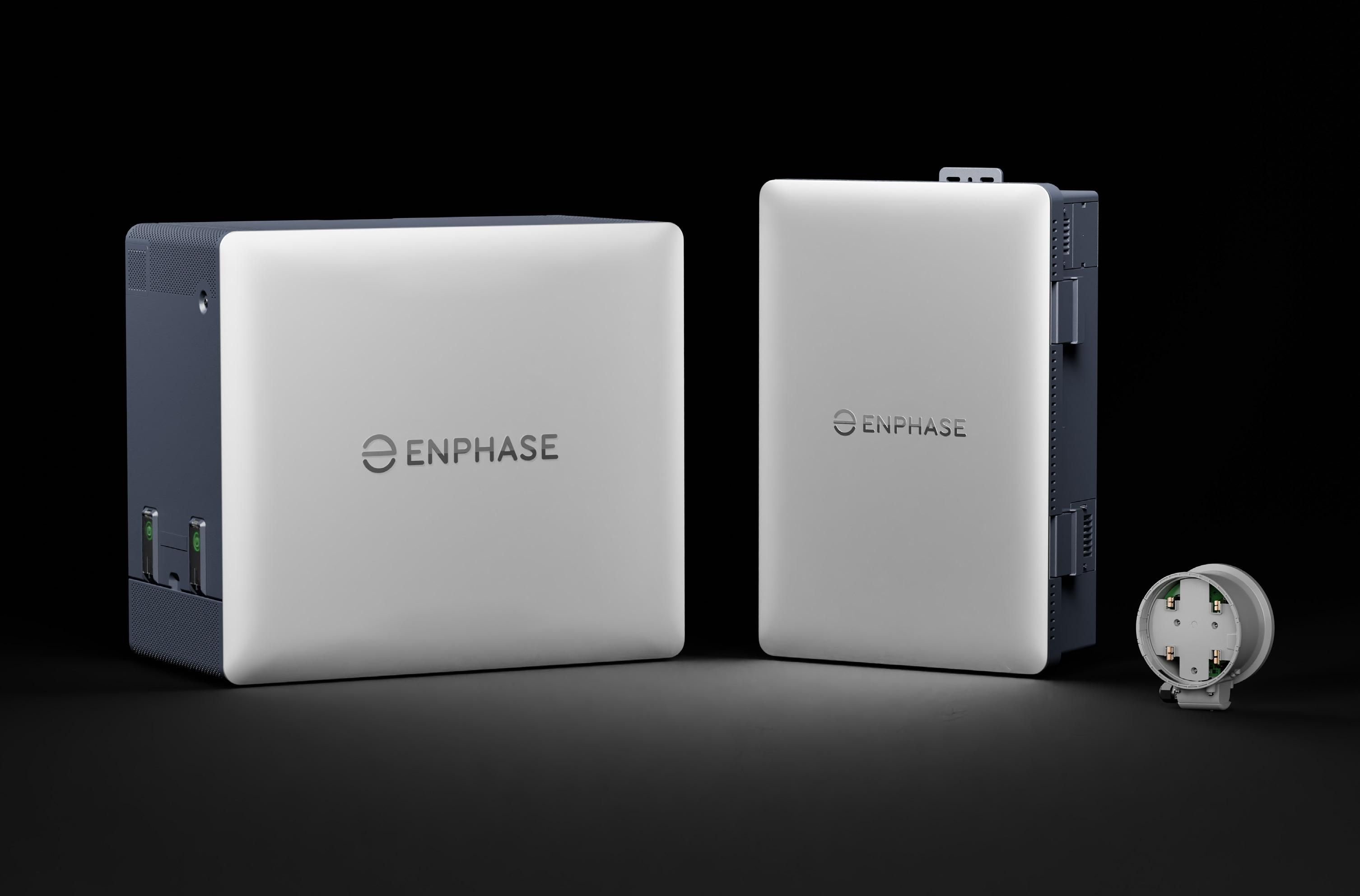


ENERFLO – SALES AND PROJECT MANAGEMENT PLATFORM
In the second year of SPW’s Top Products competition, Enerflo’s software places for the second time in the Bestin-Show category. A brand-new set of judges found the open-API software platform a helpful tool for residential solar sales and installation professionals aiming to streamline workflows, reduce soft costs, close more deals, complete projects faster and scale with confidence. Unlike closed ecosystem platforms, Enerflo supports integrations, giving solar companies the freedom to choose the tools that work best for them. Enerflo centralizes and standardizes project data, enabling seamless workflows across the entire project lifecycle — all managed from a single platform with one login.
The Enerflo platform is made up of three core components, with a new fourth component in beta: Sales Core (canvassing through project submission), Install Tracker (project management through PTO), Customer Portals (a homeowner-facing hub for updates, communication and transparency) and the beta-version Virtual Sales Rep (a flexible online lead gen tool).
Since launching in 2019, Enerflo has continued to deepen integrations and expand platform capabilities, now offering bundled solutions like canvassing, AI-powered solar designs with 97% U.S. coverage and proposals generated in under two minutes.
With the recent passage of the
One Big Beautiful Bill Act (HR1), the pressure to cut soft costs, prove longterm homeowner value and streamline operations is higher than ever. Enerflo helps solar companies pivot quickly with flexible, integrated tools that support diverse finance options, solar + storage bundling and complete project visibility. Through strategic partnerships with lenders such as Dividend, LightReach, EnFin and GoodLeap, and the integration of tools like Smart Pulls and Title Checks, Enerflo reduces costly delays and ensures financing aligns with customer qualifications early in the sales process. These features improve project accuracy, reduce change orders and cancelations, and keep timelines on track. SPW
FRANKLINWH ENERGY STORAGE – APOWER S
Batteries reign supreme this year, taking three of the Top 5 spots for SPW’s Top Products in the residential market. The aPower S from FranklinWH is one of those Best-in-Show winners, featuring the largest storage capacity at 15 kWh. Not only that, a single aPower S unit can access 20 kW of solar panels.
The aPower S is the next generation of FranklinWH’s aPower series and was developed to adapt to the larger power consumption of modern homes. FranklinWH has a significant customer presence in the established California market, and many homeowners with
legacy solar + storage systems are also looking to expand to meet increased power needs. The higher capacity (and higher power acceptance) of aPower S allows for high-power users to go solar + storage with fewer products.
Released earlier this year, aPower S has already met customer expectations, even in alternative setups. One customer with a ground-mount array and small generator installed the aPower S for its direct DC solar input to internal inverters, coupled with the system’s black-start capability. The FranklinWH system allows trickle-DC solar input while using

the generator to feed the battery and home simultaneously during low light conditions.
Overall, this new aPower iteration reduces the bill of materials and equipment needed for expanding existing solar + storage systems. It can also accommodate a large solar input of up to 20 kW, which eliminates the need for additional devices and solutions to handle that large power. And the unique backward and cross-version compatibility allows customers to easily expand systems in the future without overhauling their current setups. SPW

GROWATT – APX HV US BATTERY
Another battery caught the 2025 Top Products judges’ eyes, but this time it was for its flexible expansion capabilities. The APX HV US Battery from Growatt received high marks to secure a Best-in-Show distinction.
The APX HV US is a high-voltage, 5-kWh battery ideal for customers looking to expand their existing energy storage setups. Powered by Growatt’s advanced soft-switching technology, each battery module can charge and discharge independently, allowing new and old modules to work seamlessly together. A user could start with 10 kWh and later add another 10 kWh without worrying about reduced performance. The system also supports modules with different states of charge (SoC), which greatly simplifies installation — installers no longer need to spend time equalizing battery levels on-site, saving both time and effort. With a redundant design, the system ensures reliability by allowing other modules to continue operating normally even if one battery pack fails, delivering flexibility and efficiency.
Growatt considered beta customer feedback to improve the wiring layout between battery rows to make installation easier and more efficient before APX HV US was officially released in 2023. Since first launch, the battery has been improved with updated firmware logic, retesting under UL 9540 requirements and extending the operating range down to -20°C to ensure reliable low-temperature performance. The battery also includes a built-in aerosol fire suppression system for added safety in the rare event of thermal runaway. SPW
“THERE ARE MANY MODULAR BATTERY SYSTEMS ON THE MARKET, BUT FEW HAVE THE ABILITY TO OPERATE INDEPENDENTLY WITHIN THE INSTALLATION. THE APX HV US BATTERY HAS THE ABILITY TO INCREASE STORAGE CAPACITY AT ANY TIME DURING THE LIFE OF THE SYSTEM, AND EACH BATTERY MODULE CAN OPERATE AT A DIFFERENT STATE OF CHARGE. THESE FEATURES ALLOW SYSTEMS TO ADAPT TO CHANGING FAMILY NEEDS AND EVER-EVOLVING MARKET DYNAMICS. IT ALSO HAS A BUILT-IN FIRE SUPPRESSION SYSTEM FOR ADDITIONAL PEACE OF MIND.”
– WILL WHITE, JUDGE


SOL-ARK – PREMIUM 18K-2P HYBRID INVERTER
The Sol-Ark Premium 18K-2P hybrid inverter has been awarded an honorable mention in the inverter category.
The American-made hybrid inverter is batteryagnostic and provides up to 18 kW of continuous backup power, supporting more than 40 kW of solar through AC coupling. With 36 kVA of surge capacity, it ensures even large household systems remain operational during grid outages.
The Sol-Ark Premium 18K-2P hybrid inverter was developed after the company determined that 20% of its older inverter models were installed in parallel configurations, indicating a clear demand for higher continuous battery power in premium residential applications. So Sol-Ark engineers rigorously tested the premium inverter after receiving UL certification to ensure the unit could work across diverse applications. Only then was the inverter unveiled to the public in 2025. SPW


PEGASUS
– GLIDE
The Glide software platform from mounting manufacturer Pegasus has won an honorable mention this year.
Glide is more than just a mounting company’s design software. The unified platform manages the entire solar installation journey, from proposal to purchase order, so users can manage jobs efficiently without re-entering data or repeating steps.

One click individually rotates a single panel or a full row within an array, and calculates all structural and BOM as a contiguous array. It’s just as easy to add or remove panels, insert pipe-vent spacing between panels and assign wind zones to specific panels. Users can also design a single project with various arrays that have different roof types, such as a house with both comp shingles and a flat-roof carport.
By simplifying and integrating all aspects of managing solar installation, Glide eliminates repetitive tasks, workarounds, manual entry errors and incompatible files and delivers a smooth, customized path from proposal to purchase order to install. SPW

TIGO – EI INVERTER WITH IPOC
The new Tigo EI Inverter with inverter power output control is a valuable product for the repowering market and another honorable mention winner this year.
With the El Inverter at its core, the new IPOC feature enables installers to limit the maximum AC power output of a Tigo inverter before commissioning. This power derating capability allows precise alignment with programmatic or regulatory thresholds when working with solar incentive programs or replacing legacy inverters in older systems.

With IPOC, installers can easily set AC output parameters in the field without modifying hardware or redesigning systems, ensuring fast and compliant upgrades to existing arrays. The unit’s smaller physical footprint is also helpful when looking for compact devices that fit into the same footprint as legacy devices. The broad voltage operating window (approximately 80-550 VDC) means IPOC units are highly compatible with both old and new solar panels. This flexibility reduces the need for restringing and ensures smoother integration across various system designs. SPW
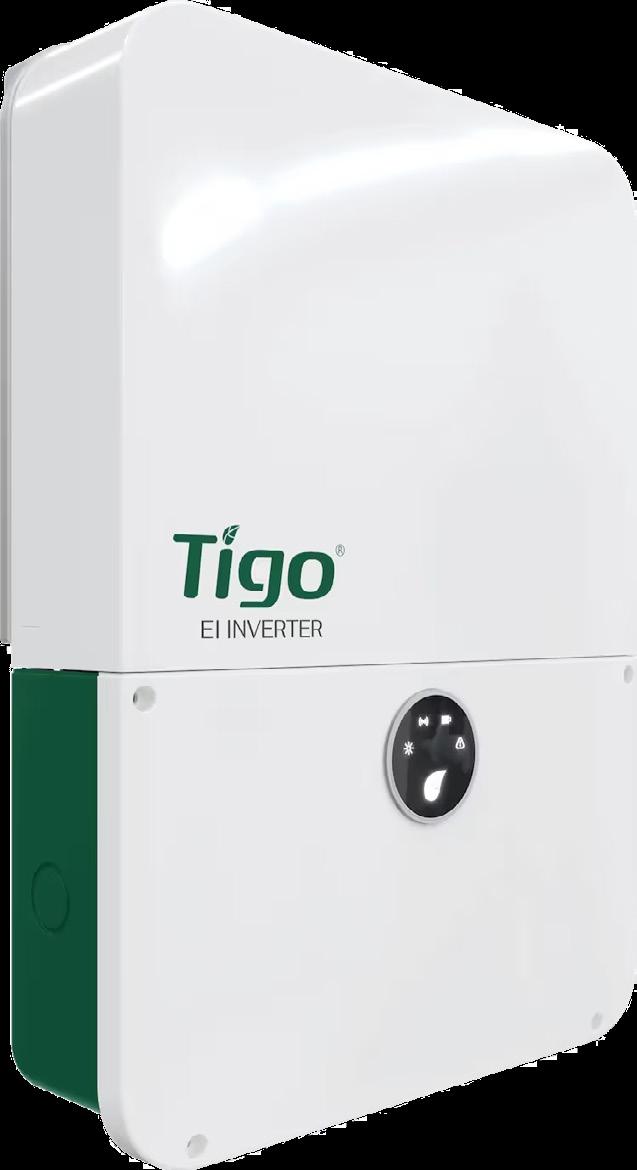
QUICKBOLT – QUICKPATCH
The unique QuickPATCH roof patch from QuickBOLT has received an honorable mention award in the balance-of-system category.
This 4-in. by 5-in. galvanized steel patch, backed with butyl adhesive, provides an easy-to-use fix when mistakes or repairs are made on the roof. It also features a top butyl strip to reseal the shingle course.
Roof holes happen, whether from missed rafters, wear and tear or the installation/removal of solar arrays or other roof-mounted equipment. QuickBOLT worked with installers and manufacturing partners to set specifications for the QuickPATCH, taking into account average hole sizes and realities of jobsite work. The result is a corrosion-resistant metal patch with pre-applied sealant, eliminating the act of improvising fixes with extra, unstandardized materials. QuickPATCH supports the principle that solar installers owe it to homeowners to leave a roof as good as, or better than, they found it. SPW


SITECAPTURE – FIELD OPERATIONS SOFTWARE
SiteCapture’s field operations software platform has received an honorable mention in the 2025 Top Products competition.
Incomplete or disorganized field reporting is one of the most common soft costs that severely impacts the bottom line of solar businesses. Extra truck rolls, financing milestone rejections, inaccurate plan sets and hours of work wasted are all-too-common side effects of inefficient field reporting and jobsite photo management. SiteCapture solves these issues with an easy-to-
use mobile app that syncs with an end-to-end work management portal that guarantees field reporting accuracy and automatically keeps photos, data and communication organized for each project.
There are many photo apps in the market, but SiteCapture is the only field operations platform that was built alongside leading residential solar installers. SiteCapture keeps field and operations teams organized so they can focus on doing great work. SPW


EPC POWER – M SYSTEM
The flexible M System inverter from EPC Power has received a Best-in-Show award within the large-scale category of the 2025 Top Products competition.
Inverters have long prioritized certain architectures, form factors or performance requirements while sacrificing performance in other areas. The solar industry is divided on its preference for string or central inverters, noting the tradeoff between the plant-level optimization and maintenance benefits of a string inverter and the robustness and scalability of a central inverter. Alternatively, the energy storage industry has struggled to find the balance between the energy benefits offered by a string inverter and the performance
features of a central inverter. And finally, the data center industry has long utilized inverters as part of a UPS but has not captured the grid-side benefits that a gridinteractive inverter can provide. With the M System, EPC solves all these problems without compromise.
The modular M System can be configured into a single 5.37-MVA inverter block or 10 independent 537kVA inverters. The M System provides the ease of repair, scalability and multiple MPPT channels that string inverters provide but can perform as a centralized unit. The Americanmade inverters also demonstrate high performance in data center setups,
mitigating the effects of rapid load changes and harmonic distortions inherent in AI computing, ensuring maximum uptime.
EPC first installed M Systems at two BESS sites and one PV facility, collecting data over several months to ensure the systems were meeting performance needs and expectations prior to a fullscale deployment. Since then, 3 GW of M Systems have been sold for delivery in 2025 and early 2026. The M System is already helping customers achieve domestic content goals, reduce battery size (through string optimization), improve uptime and mitigate power quality issues caused by data centers. SPW


AFFORDABLE WIRE MANAGEMENT – STRATA STACK
The non-residential judges have awarded a Best-in-Show signifier to the Strata Stack cable management solution from Affordable Wire Management (AWM).
Strata Stack is a cable management solution engineered specifically for battery energy storage systems (BESS). The above-ground wire management product securely organizes cables to prevent overheating, ensure proper airflow and maintain consistent spacing in an ampacityoptimized configuration. This reduces circuit count and lowers material and labor costs. Strata features a single-bolt, fault-rated cleat within an innovative clamp system, designed to last the lifetime of any BESS.
Strata Stack was designed for the Fluence Smartstack BESS to address inefficiencies with cable trays. Traditionally, custom cable trays do not line up properly with the actual BESS installation. EPC crews are forced to cut and modify the trays to make them fit. Strata Stack eliminates the need for traditional cable trays altogether with its field-adjustable and flexible design using cable cleats. These clamp-like products decrease steel costs by allowing up to 4.5 ft of spacing between each cable cleat. This lessens the amount of trenching on a project, sometimes completely eliminating the need.
Although developed for Fluence’s BESS, the Strata cable management solution can be adapted to other large-scale energy storage systems, providing a field-adjustable system that will decrease labor hours and improve installation timelines worldwide. SPW
“THE STRATA STACK FORM AWM IS A FLEXIBLE AND EFFECTIVE CABLE MANAGEMENT SYSTEM THAT RESPONDS TO INDUSTRY NEEDS AND ELIMINATES THE NEED FOR COSTLY FIELD WORK AND CUSTOM CABLE TRAYS. DESIGNED FOR SPACING LARGER CONDUCTORS SAFELY AND EFFICIENTLY, THE STRATA STACK IS VERY FLEXIBLE AND CAN EASILY ADAPT TO MANY DIFFERENT CONFIGURATIONS. IT IS A SIMPLE BUT WELL-THOUGHT-OUT PRODUCT THAT WILL ENSURE PROBLEM-FREE CABLE MANAGEMENT IN A WIDE VARIETY OF APPLICATIONS.”
– BEN JONES, JUDGE



PVFARM – DESIGN PLATFORM
The popular PVFARM design platform has received a Best-in-Show award in the software category of the 2025 Top Products contest.
PVFARM delivers prospecting-tool speed with engineering-grade detail, enabling utility-scale solar teams to design faster while maintaining accuracy. The platform unifies layout, civil and electrical engineering in a single workspace, which helps teams avoid late-stage surprises and improve project bankability by ensuring every design iteration reflects buildable reality. Since launching in January 2024, PVFARM has become the “Swiss Army knife” for solar design, allowing solar engineers to rapidly ensure project economics and bankability.
A key insight for PVFARM came from recognizing why EPCs discard prospecting outputs entirely: They know that adding real construction details — pile spacing,

motor gaps, actual tracker lengths — will cascade through and change the entire layout. The original design never accounted for these requirements, so there's nothing to build on. PVFARM flips this to include construction details from the start, delivered at prospecting speed.
The platform uncovers the hidden interdependencies that cause project failures, where pushing down costs in one discipline causes them to pop up in another. Choosing rigid trackers to save costs forces flat grading that dramatically increases earthwork volumes. Moving BOS equipment positions to reduce cable lengths forces different wire sequences that impact the entire harness configuration. PVFARM exposes these trade-offs immediately, enabling teams to optimize the entire project rather than discovering conflicts late in design or during construction. SPW
"PVFARM STOOD OUT BECAUSE IT EMPOWERS TEAMS TO DESIGN SMARTER, MOVE FASTER AND BUILD WITH CONFIDENCE. BY EXPOSING INTERDEPENDENCIES EARLY, IT CAN ENABLE CLEANER LAYOUTS AND MORE COST-EFFECTIVE ELECTRICAL BALANCE-OFSYSTEM SOLUTIONS."
- TROY RENKEN, JUDGE
RAPID FOOTINGS GROUP – PILE FIXTURES
A relatively unknown product from Rapid Footings Group has been awarded a large-scale Best-in-Show distinction in the 2025 Top Products contest.
Pile embedment depth is determined by structural engineers who evaluate racking requirements and site geotechnical conditions. During installation, some piles encounter impediments and fail to reach specified embedment depths (called refusals or rejections) or otherwise fail to generate design requirements for axial and lateral capacity due to soil conditions. Concrete collars are often used to stabilize such piles, but concrete is slow to form and pour, and requires many days to fully cure. At the end of project life, concrete removal is arduous and environmentally unsound.

Rapid Footings Group first unveiled its pile fixtures to the solar industry in 2022. They are small, quick to install with minimal equipment and fully recyclable at the end of project life. The steel flange and web-mount fixtures bolt to piles in the ground to add capacity to driven and partially driven piles. The fixtures can also be used to lift and stabilize sinking piles in existing solar operations, common in soft soils.
Rapid Footings Group’s pile fixtures have already helped lift and stabilize piles on commissioned projects in a top EPC’s portfolio. The web-mount fixtures allowed for stabilization of piles in less than an hour. The fixtures are a quick and inexpensive solution for pile sink and stability problems. SPW

“The pile fixtures product from Rapid Footings Group seems to provide a low-cost, fast installation method to stabilize troublesome piles without the use of concrete. I can see this simple, small and recyclable solution making a large difference in current and future solar PV installations.”
– Emily Hwang, judge
FLUKE CORP. – PVA-1500 SERIES PV ANALYZER, I-V CURVE TRACER
Judges have high praise for Fluke’s latest I-V curve tracer, awarding it the final Best-in-Show recognition in the 2025 Top Products contest.
The Fluke PVA-1500 is designed to help asset owners and solar technicians meet the growing demand for reliable, efficient solar energy production. As asset owners face mounting pressure to maximize uptime and ensure the longterm health of their solar assets, the PVA-1500 provides the speed, precision and user-friendliness needed to address these challenges head-on.
Unlike older versions of the tool, the PVA1500 can deliver uninterrupted measurements even in hot environments, ensuring consistent performance. Fluke says it is the only I-V curve tester capable of accurately measuring I-V curves for 1,500-V high-efficiency solar panels without overheating, a critical advancement for today’s large-scale systems.
Its advanced built-in PV model allows for instant performance validation, while a sweepto-sweep delay of just nine seconds enables measurement of 3.5 MW in under an hour. Wireless connectivity streamlines setup, enhances safety and provides greater freedom of movement during troubleshooting. The system also automates data management, analysis and reporting, making the entire process faster and more efficient. The PVA1500 builds on Fluke’s September 2023 acquisition of Solmetric and its PV Analyzer, but now benefits from Fluke’s legacy of rugged engineering, advanced technology and global support. SPW
“THE PVA-1500 IV CURVE TRACER FROM FLUKE IS A WELL-DESIGNED PRODUCTIVITY TOOL THAT ENSURES PV SYSTEM PERFORMANCE DATA IS CAPTURED QUICKLY AND ACCURATELY — EVEN IN HIGH TEMPERATURES. AS AN ASSET OWNER, IT IS ESSENTIAL TO CAPTURE REAL-TIME PERFORMANCE, PRESENT DATA IN A MEANINGFUL WAY AND IDENTIFY PRECISE PROBLEM AREAS QUICKLY TO MAXIMIZE PERFORMANCE. RESPONDING TO MARKET NEEDS, FLUKE HAS INTEGRATED SEVERAL USER-FRIENDLY FEATURES INTO THIS EXCELLENT TOOL.”
- BEN JONES, JUDGE


EKO INSTRUMENTS – MS-80SH PLUS+
The MS-80SH Plus+ Solar Monitoring Station from EKO Instruments is an honorable mention winner in the 2025 Top Products contest.
The MS-80SH Plus+ addresses a critical gap in solar monitoring — accurate measurement of diffuse horizontal irradiance (DHI). Under overcast or variable sky conditions, diffuse irradiance can exceed direct irradiance. For bifacial tracker-based systems, accurate DHI data is essential for optimizing tracker position and overall system performance. The MS-80SH Plus+ uses a rotating shadow band to provide higher-accuracy data points at a lower cost, allowing projects to meet bankability requirements without the expense and complexity of a full sun tracker.
The EKO device has already been deployed across Europe and the Middle East but is new to the U.S. market. The first U.S. installs were recently completed, demonstrating the product’s capability to reduce complexity compared to tracker-based shading systems. More accurate DHI measurements will support the development of more efficient tracker algorithms as time progresses. SPW
SHOALS
– BESS RECOMBINER
The cabinet-based combiner box for battery energy storage systems (BESS) from Shoals Technologies Group has been awarded an honorable mention in the large-scale track of the 2025 Top Products competition.
The Shoals BESS Recombiner aggregates multiple battery and/or solar inputs into a single high-power output for downstream AC conversion. Designed for standalone utility-scale BESS, solar + storage, microgrid and data center applications, it benefits developers and installers by reducing inverter count, streamlining installation and improving safety and reliability, while lowering total project costs.
This UL 1741-certified, off-the-shelf solution is made in Tennessee and has already been installed across the country after being unveiled earlier this year. The combiner box improves project efficiency, reduces equipment and labor requirements and ultimately supports stronger ROI. SPW




ANZA – SOLAR PRO SUBSCRIPTION
The valuable flagship data and analytics platform from Anza has received an honorable mention from judges of the 2025 Top Products contest.
Anza offers the industry’s most comprehensive and current solar module supply chain and advanced analytics in its Solar Pro Subscription. This provides EPCs, IPPs and utilities with the clarity they need to make optimal development and procurement decisions in today’s volatile solar market. With near-term pricing and data, as well as predictive tools based on thousands of supplier quotes, users gain forward-looking insights that help them bid more accurately, negotiate effectively and accelerate development and procurement cycles.


By combining supplier-provided data with a sophisticated technology engine and machine learning, Solar Pro turns market uncertainty into actionable intelligence. For developers and installers, this means faster development and procurement cycles, more won business and confidence that every purchasing decision drives stronger outcomes. SPW
CPS AMERICA – 250-KW/600-V STRING INVERTER BLU BANYAN – BLUBUDGET
CPS America’s 250-kW/600-V string inverter has received an honorable mention award in the 2025 Top Products competition.
The three-phase inverter designed specifically for large ground-mount solar installations features a separable wire-box, which allows for both centralized and distributed setups. Project designers can choose the configuration that best fits their site layout, making installation simpler, reducing wiring complexity and optimizing performance. And at 600 V, the inverter allows more flexibility and lower eBOS costs associated with installation.
The CPS 250-kW/600-V string inverter is built with extra apparent power headroom up to 264 kVA, so developers can deliver full power while still meeting grid requirements. This means maximum energy harvest, no hidden clipping when reactive power is needed and peace of mind that projects stay compliant and profitable. SPW
The bluBudget enterprise resource planning solution from Blu Banyan has been awarded an honorable mention in the software category of the 2025 Top Products contest.
Large-scale solar and renewable energy projects face razor-thin margins, shifting schedules and complex financing structures. Generic financial planning and analysis tools often fail because they can’t provide real-time information to drive decisions, lack solar-specific reporting and fall out of sync with project schedules. By bringing advanced project budgeting directly into NetSuite, bluBudget provides real-time financial visibility and control, replacing spreadsheets, disconnected tools and manual reconciliations.
A standout bluBudget feature is keeping budgets synchronized with project tasks when schedules shift. This reduces idle time, fumbled data entries and unnecessary interest expenses, helping managers rebalance resources with confidence. bluBudget is also purpose-built for solar and preconfigured for PPAs, leases and tax credit tracking. SPW






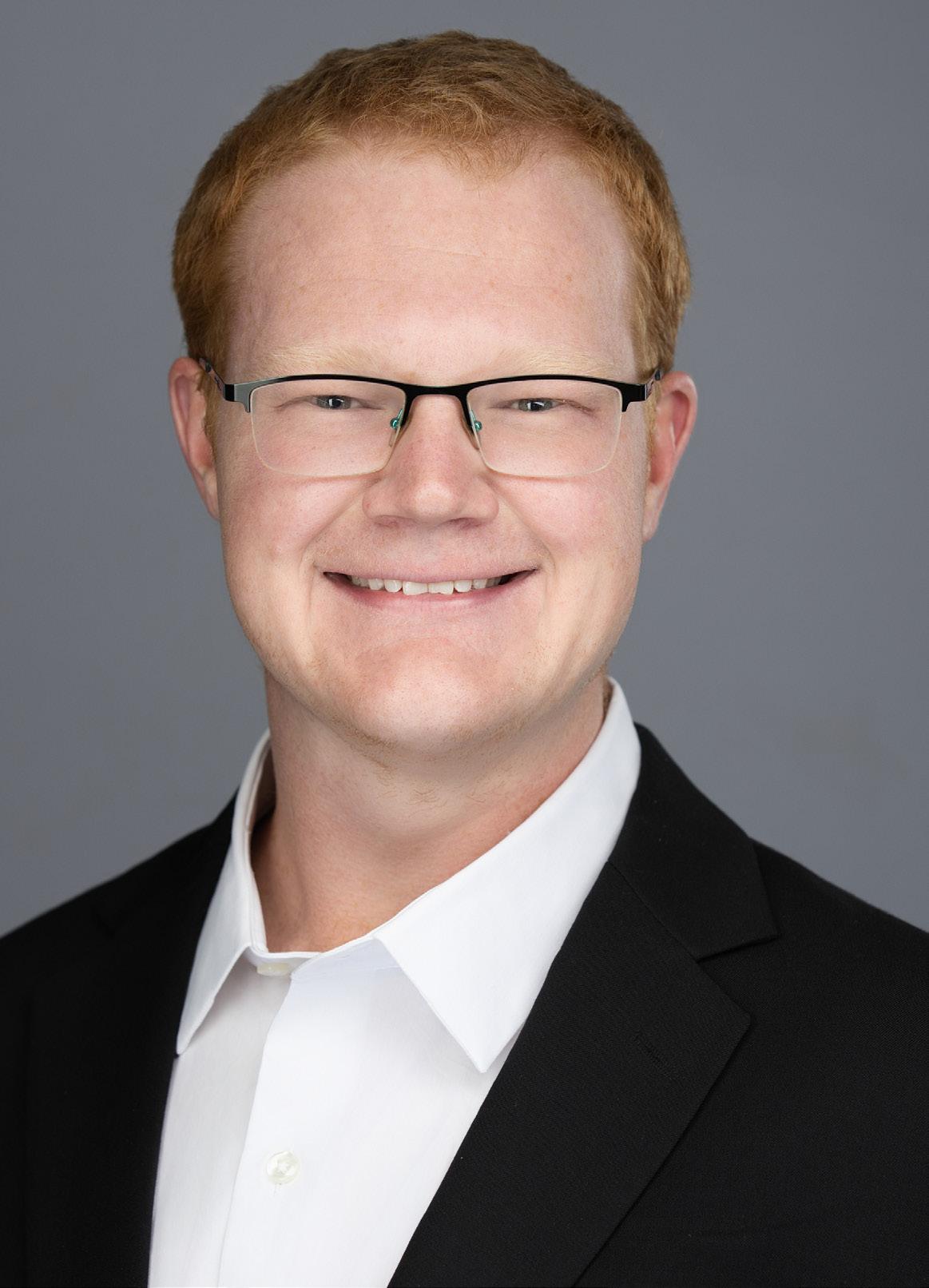



2025 RISING STARS
The solar + storage industry is at an inflection point, with federal pushback threatening to derail progress but unending energy demand requiring these solutions. Whether the industry weathers these challenges and comes out stronger comes down to the thousands of dedicated people working every day to improve systems. Solar Power World is honored to recognize a few of these solar workers in our second annual collection of Rising Stars. These six were nominated by their peers for their standout achievements in project design, O&M, advocacy and much more. Congratulations to this year’s Rising Stars.

RISING STARS 2025

LINDSAY BOURGOINE
DIRECTOR OF POLICY AND GOVERNMENT AFFAIRS AT REVISION ENERGY
With policy an inextricable part of solar progress in the United States, many larger solar contractors have invested in staff to advance their interests. Northeast solar installer ReVision Energy hired Lindsay Bourgoine in 2023 to build the company’s policy infrastructure from scratch. In two years, Bourgoine’s powerful advocacy and organizing work has shifted the employee-owned company from a reactive position to a proactive force working to shape legislation across Maine, New Hampshire and Massachusetts. She brings competitors, allies, policymakers and community voices together, aligning people around shared priorities and amplifying collective influence.

What are the most challenging and, alternatively, most rewarding parts of working in the solar and storage industry right now?
My role at ReVision Energy is in leading our public policy work, and it should come as no surprise that current political perceptions of solar energy bring forth immense challenges in advancing solar policy at the local, state and federal level. Operating in an environment of misinformation has proved to be very difficult to overcome with key policy decisionmakers.
In these times, one of the most rewarding parts of my role is serving as an ambassador for ReVision Energy in the political arena: This past year, I particularly enjoyed ensuring our teammates had timely, comprehensive updates on the rapidly changing political landscape so they could best answer questions in real time with our current and prospective customers. I feel very grateful that my fellow co-owners trust me to negotiate our interests in the political arena, and I want to ensure they understand exactly what is happening in that daily work.
What advice would you give someone just starting their career in solar?
While it may seem that the political climate is stacked against solar, it remains one of the most abundant, least-cost sources of energy. Don't forget that. While policy may make the environment more challenging, it doesn't change the fact that the sun will shine on. Keeping the long-term view front-of-mind right now is incredibly important.
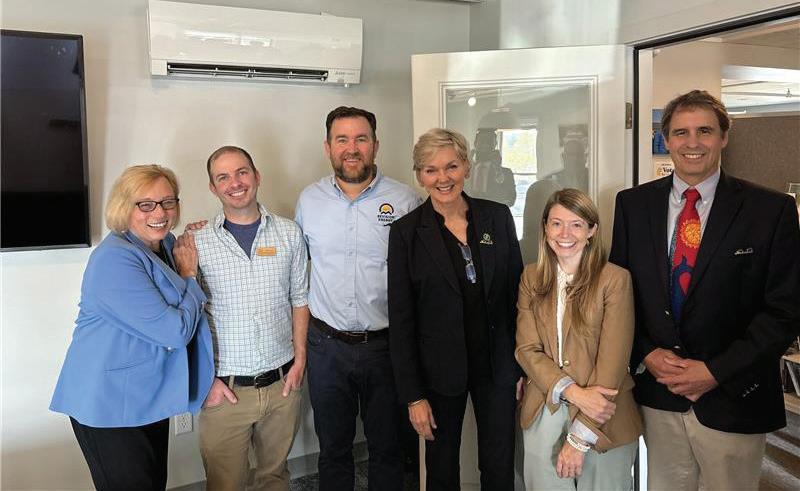
What accomplishments are you most proud of so far in your solar career?
I am most proud of bringing forth compromise in multiple state legislatures over the past few years. I often work in states where the environment only favors small, incremental change and it's important to remember that any small change in the right direction is moving us toward the future we all want to see. While others may say it's not worth it, I'm proud of the realism and pragmatism I bring to my work.
What's a Big Idea you have about the renewable energy transition?
While not a “Big Idea,” an acknowledgement and reminder that so much of the work in deploying solar energy ultimately depends on utility
regulation and power sector rate design — and it will require significant attention, advocacy and creative thinking for public utilities commissions to allow for systemic change. I'm excited to see what new groups like PowerLines will do in this space to change the status quo.
Who or what has had a major influence on your work in renewable energy?
I'm very grateful to the Yale Center of Business and the Environment and the community there — their "crash courses" in renewable energy gave me the background I needed as a climate advocate to transition my career more directly into energy policy. I'm a big fan of their certificate program in Financing and Deploying Clean Energy too. SPW
Lindsay Bourgoine and colleagues at ReVision Energy headquarters in 2024 with Maine Gov. Janet Mills and Former Dept. of Energy Sec. Jennifer Granholm.

DENNIS WEAVER
METEOROLOGIST AT VDE AMERICAS
As increasing extreme weather threatens utility solar projects, the industry is working to generate better risk predictions and make smarter siting decisions. Dennis Weaver, staff meteorologist at VDE Americas, is a rising leader in solar weather risk analysis. Weaver maintains the VDE Hail Risk Atlas ArcGIS mapping product, in which users can map hail risk for the continental United States. This tool, along with Weaver’s other efforts, is giving the solar industry insights into hail-prone regions of the United States — enabling better project development and ensuring projects remain insurable.

What are the most challenging and, alternatively, most rewarding parts of working in the solar and storage industry right now?
As it relates to catastrophic risk from extreme weather, where the majority of my work resides, I’d say one of the more challenging aspects is that the biggest questions coming from the solar industry are constantly changing and usually don’t have clear answers. It may be a matter of getting the right data, or developing the right product, or, in some cases, just providing the right guidance. But it’s a complicated problem and so the answers are complicated. To put it another way, I spend most of my time in ground-breaking scientific space.
This is also easily the most exciting and rewarding part of the industry right now! As an example, when I got started in solar a little over two years ago, one of the major scientific obstacles was understanding how wind modifies the way hail falls within a thunderstorm. This interaction relates to both the angle at which hailstones fall and the energy they carry, ultimately influencing the potential of a storm to cause damage at a solar site. While we are constantly improving our scientific understanding of these phenomena, there has been a tremendous amount of progress on this particular topic. As a matter of fact, we can actually now incorporate the effect of wind in the financial modeling of severe hail events.
What advice would you give someone just starting their career in solar?
Take every opportunity you get to meet people! The passion for not only their
own work, but for the success of solar as a whole, is infectious. There are so many great people across this industry who are more than willing to share both what they’ve learned, and their ambition for the future.
Early on, I was hesitant in many of these situations because I felt I didn’t know enough or wasn’t qualified to participate in the discussion. It turns out that just by wanting to be a part of the ride, you’ve already completed the first step. You don’t have to have every answer right away — just a willingness to listen, ask good questions and ultimately put in the work toward a better energy future.
What accomplishments are you most proud of so far in your solar career?
One of my very first projects in solar was working on developing the VDE Americas Hail Risk Atlas. This is a set of map layers that describe hail risk across the U.S. in terms of both event probability and financial loss for a variety of potential solar plant operating conditions during severe hail events. This product helps project developers, tracker manufacturers and other industry stakeholders get a quick visual assessment of a project’s exposure to extreme hail. SPW

RISING STARS 2025

CONNOR HOGAN
CO-FOUNDER OF ONEPLANET RECYCLING
End-of-life planning for solar projects is an increasingly important topic to the industry, with early projects aging and many new gigawatts going into the ground each year. One solar recycling pioneer, Connor Hogan, is dedicated to using recycled modules to position the solar industry as a key provider of critical metals and materials. Hogan founded OnePlanet Recycling in Jacksonville, Florida, just months after his 28th birthday. OnePlanet’s technology can extract 99% of embedded materials in panels, from copper and aluminum to polysilicon. The OnePlanet factory is expected to have the capacity to process over 2 million modules annually upon commissioning in 2027, with planned expansions for additional phases totaling 6 million modules by 2030.

What are the most challenging and, alternatively, most rewarding parts of working in the solar and storage industry right now?
Most challenging: Navigating the industry during a period of both policy uncertainty and technological/operational maturation — the past year has been challenging for many in the space with the whiplash effect of the introduction of the OBBBA on the heels of IRA.
Most rewarding: Knowing that through challenges and adversity comes durability and tenacity. The solar/storage industry has demonstrated an uncanny ability to continue to defy growth models despite headwinds. Overall, it’s a highly resilient sector that I’m proud to be a part of.
What advice would you give someone just starting their career in solar?
Identify what your interests are early and find the mentors who can really help you launch yourself into that discipline; you would be amazed at the diversity of backgrounds in solar and storage. Mentors want to see you succeed, although sometimes the best advice might not be what you want to hear.
What accomplishments are you most proud of so far in your solar career?
I’m extremely proud to have been an early member of several startups (or funds) that have gone on to install, own and finance gigawatts of projects; I was one of the first employees at Pine Gate, GSRP (MN8 Energy) and Euclid Power. Between the three experiences, I’ve in some way, shape or form touched ~3% of the total U.S. renewables fleet. Separately, having co-

founded OnePlanet, I’m incredibly proud of the momentum we’ve built around circularity in solar. It’s been rewarding to not only have installed gigawatts, but also lay the foundation for recycling gigawatts.
What's a Big Idea you have about the renewable energy transition?
The transition replaces fuel-based generation with mineral/material-based resources (Li, Si, Cu, Ag, etc.); that’s unique in that minerals can be recycled in ways that fuels can’t. Electrification and the digital era (especially with advent of AI) will place additional stress on the upstream extraction and recycling of critical minerals and metals. Separately, I’m a huge believer in dual-use applications for PV/BESS, whether that’s agrivoltaics, apiaries, native ground-cover and/or grazing. SPW


DAVID KOPER
DIGITAL DELIVERY SPECIALIST AT BURNS & MCDONNELL
Cutting soft costs and streamlining workflows is top of mind for the country’s largest solar developers. David Koper, digital delivery lead for renewables at Burns & McDonnell, has spearheaded major digital workflow changes that have advanced the firm’s speed and precision in solar project execution. Koper is the CAD coordinator for all solar projects, and he recently created a new grading tool that turned a two-week manual process into a four-hour automated task. Koper’s innovation is allowing Burns & McDonnell to bid more competitively and accurately and secure more work in a crowded market.

What are the most challenging and, alternatively, most rewarding parts of working in the solar and storage industry right now?
From my perspective in digital delivery, the greatest challenge is balancing customization with speed. Each solar project has a unique footprint, and our goal is to tailor the design and project lifecycle to deliver maximum value. However, the industry’s accelerated schedules and immovable interconnection dates often conflict with that ideal. The most rewarding part of my job is navigating those constraints — using innovation and smarter workflows to deliver a customized, high-quality project on the timeline the market demands.
What advice would you give someone just starting their career in solar?
Be prepared for a career in a uniquely dynamic and tight-knit industry. The colleagues you work with today will likely be your collaborators, clients or partners for years to come, so build strong, reliable relationships. While every project presents its own hurdles, the work is incredibly fulfilling because you can see your direct impact. You’re not just building infrastructure — you’re creating the tangible assets that are driving the energy transition forward.
What accomplishments are you most proud of so far in your solar career?
I’m most proud of seeing a culture of innovation take root at Burns & McDonnell, sparked by the success of our first automated design tool. Initially, there was hesitancy about the upfront
development time. However, when we launched a tool that reduced proposal turnaround time by 75%, its success was undeniable. That single achievement created a ripple effect, spurring more interest in innovation across our business. It proved that strategic investments in technology can deliver transformative gains in both efficiency and quality, paving the way for a more integrated workflow between our office and field teams. Seeing that mindset shift has been the most rewarding accomplishment of all.
Who or what has had a major influence on your work in renewable energy?
My drive to innovate is heavily influenced by my early experience outside of renewables, where I worked within highly complex, tightly structured systems
that often struggled to keep pace with change. That experience highlighted the importance of designing agile solutions that can adapt as industries evolve. It became clear we were spending more effort trying to fit new solutions into an old box than it would take to design a better box. That experience taught me a valuable lesson: While true innovation can seem like an insurmountable hurdle, a culture of continuous improvement always reveals the value of spending one hour today to save one hundred hours tomorrow. SPW


RISING STARS 2025

TIFFANY BUCK
DIRECTOR OF SUSTAINABILITY AT AREVON
In the push to make large-scale solar projects as environmentally friendly as possible, Tiffany Buck is making her mark. As the director of sustainability at Arevon Energy, Buck is responsible for developing and implementing environmental best practices into the developer’s greenfield and brownfield solar developments. Through her sustainability work, Buck got involved in the American Solar Grazing Association, where she helped launch ASGA’s first agrivoltaics training program for solar professionals. Buck’s work is helping developers and project teams across the country responsibly integrate livestock grazing into renewable energy projects.

What are the most challenging and, alternatively, most rewarding parts of working in the solar and storage industry right now?
The most challenging part is bridging the gap between ambition and action, especially when it comes to sustainability. Everyone agrees we want to build responsible and sustainable energy systems, but translating those values into consistent on-the-ground practices across projects takes persistence, creativity and partnership.
The most rewarding part is seeing that work come to life, when a solar site starts supporting sheep grazing, or when people begin to see renewable energy as part of a thriving ecosystem, not separate from it. Those moments remind me that change in this industry doesn’t just happen in policy or boardrooms, it happens in the soil, the grass and the communities around our projects.
What advice would you give someone just starting their career in solar?
Stay curious and stay grounded. Solar is evolving fast, and it’s easy to get caught up in the pace or the ever-changing regulatory landscape. But the best ideas often come from listening to landowners, to local communities, to those who’ve been managing the land long before we arrived.
Also, don’t wait for permission to think creatively. The industry needs people who ask, “What if?” and who are willing to test better ways of doing things, whether that’s managing vegetation differently, designing for recyclability or finding new ways for projects to create lasting benefits in local communities.
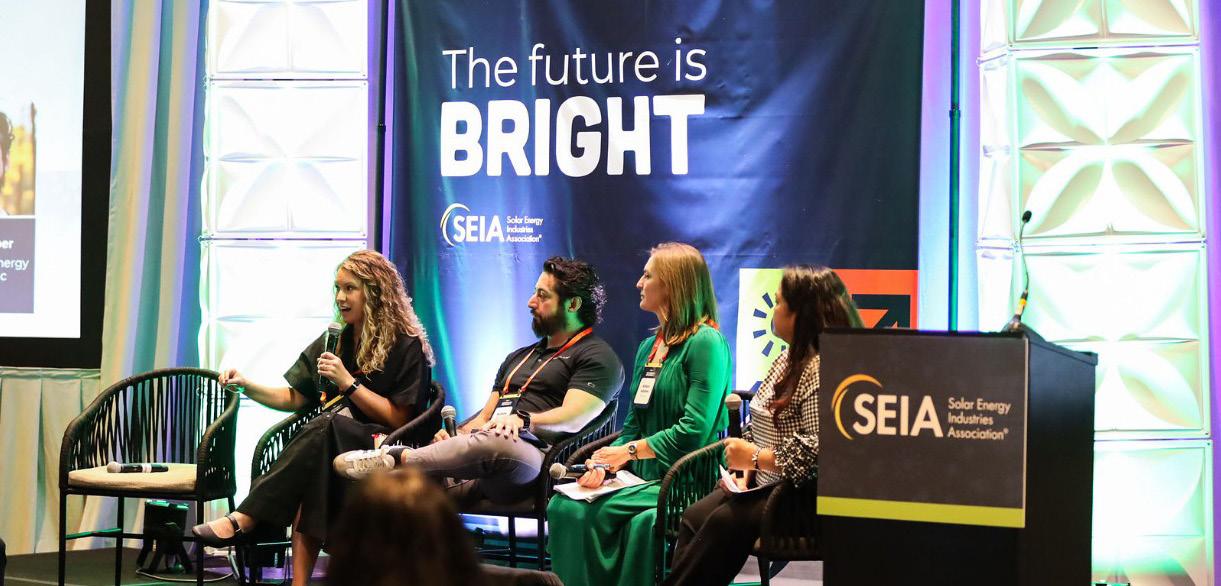
What accomplishments are you most proud of so far in your solar career?
I’m proud of helping shape how the solar industry thinks about land stewardship and co-benefits. From building companywide sustainability frameworks to piloting grazing and pollinator programs, I’ve focused on turning sustainability from a statement into a system.
This year was especially meaningful as ASGA launched the first Solar Grazing Certification Training Program for Solar Professionals, an idea I helped shape and develop to equip the industry with the knowledge and tools needed to prepare for and manage solar grazing effectively.
Who or what has had a major influence on your work in renewable energy?
I’ve always been influenced by the people who work closest to the land. I spent my early years in the Texas Panhandle, watching my grandfather care for the same land where his father once raised cattle.

For my family, that land was everything, a source of livelihood, connection and pride.
Farmers, graziers and landowners who understand the land’s limits and potential have shaped how I think about sustainability in renewables. Their practical wisdom about stewardship, resourcefulness and balance reminds me that progress works best when it strengthens what’s already there, not replaces it. That belief shapes how I think about solar, as something that should add value to the land and the people connected to it. SPW

JACOB JUAN CARLOS YANG
FOUNDER AND CEO AT AMP YOUR STORY
Solar success stories wouldn’t reach the public without the many communications professionals who work tirelessly to spread the message. One clean energy marketing professional, Jacob Juan Carlos Yang, has gone above and beyond in uplifting the renewable communications profession. After stints at Bertelsen Energy, Transect and CHARGE Energy Branding, Yang launched his own clean energy ad agency called Marketergy. In the face of market turmoil due to federal policy changes, Yang formed a new professional group called Amp Your Story to bring the clean energy marketing sector together for support and growth. Yang is creating space for more voices to be heard in the clean energy movement.

What are the most challenging and, alternatively, most rewarding parts of working in the solar and storage industry right now?
The most difficult are the workforce reductions in clean energy, which often hit marketing and communications roles first and heavily. The most rewarding part is that despite the shifts in the White House, I can still lean into my own values and make a difference every day.
What advice would you give someone just starting their career in solar?
Take the time to learn the industry! Read, read, read — as much as you can. There are phenomenal publications in the industry with world-class journalists.
What accomplishments are you most proud of so far in your solar career?
I’m most proud of the network I’ve built in clean energy marketing. I felt so siloed prior to expanding who I know. I now realize there’s a vast ocean of clean energy companies globally that employ people who have similar pains as myself and are looking for a community. Amp Your Story was built to bring us all together.
What's a Big Idea you have about the renewable energy transition?
Creating a network of clean energy marketers and communicators to raise the bar as an industry. Marketing and communications roles aren’t a nice-to-have — they are a must-have for organizations. I created Amp Your Story to bring these folks together to learn, network and be something more than just the individual work we do.
Who or what has had a major influence on your work in renewable energy?
AJ Wilcox from the LinkedIn Ads Show lives and breathes the saying, “A rising tide lifts all boats.” He is a mentor and friend that has made time for me again and again. I intend to pay forward what he’s given me to people in my own industry. SPW


Courtney Nagle, WTWH Media, 1111 Superior Ave, Suite 1120, Cleveland, OH 44114
EDITOR: Kelly Pickerel, WTWH Media, 1111 Superior Ave, Suite 1120, Cleveland, OH 44114
MANAGING EDITOR: Kelsey Misbrener, WTWH Media, 1111 Superior Ave, Suite 1120, Cleveland, OH 44114
OWNER COMPLETE MAILING ADDRESS
WTWH Media, LLC, 1111 Superior Ave, Suite 1120, Cleveland, OH 44114
Mountaingate Capital, 1225 17th St, Suite 2575, Denver, CO 80202
KNOWN BONDHOLDERS, MORTGAGEES, AND OTHER SECURITY HOLDERS
AMOUNT OF BONDS, MORTGAGES, OR OTHER SECURITIES
WTWH Media, LLC: 1111 Superior Avenue, Suite 1120, Cleveland, OH 44114
Ph: 888.543.2447 • Fax: 888.543.2447
SOLAR POWER WORLD does not pass judgment on subjects of controversy nor enter into disputes with or between any individuals or organizations.
SOLAR POWER WORLD is also an independent forum for the expression of opinions relevant to industry issues. Letters to the editor and by-lined articles express the views of the author and not necessarily of the publisher or publication. Every effort is made to provide accurate information. However, the publisher assumes no responsibility for accuracy of submitted advertising and editorial information. Non-commissioned articles and news releases cannot be acknowledged. Unsolicited materials cannot be returned nor will this organization assume responsibility for their care.
SOLAR POWER WORLD does not endorse any products, programs, or services of advertisers or editorial contributors. Copyright © 2025 by WTWH Media, LLC. No part of this publication may be reproduced in any form or by any means, electronic or mechanical, or by recording, or by any information storage or retrieval systems, without written permission from the publisher.
SUBSCRIPTION RATES: Free and controlled circulation to qualified subscribers. Non-qualified persons may subscribe at the following rates: U.S. and possessions, 1 year: $125; 2 years: $200; 3 years $275; Canadian and foreign, 1 year: $195; only U.S. funds are accepted. Single copies $15. Subscriptions are prepaid by check or money orders only.
SUBSCRIBER SERVICES: To order a subscription or change your address, please visit our web site at www. solarpowerworldonline.com
SOLAR POWER WORLD (ISSN 2164-7135) USPS
PUBLICATION # 22130, Copyright © 2025 by WTWH Media, LLC is published 6 times per year: January, March, May, July, September and November by WTWH Media, LLC, 1111 Superior Avenue, Suite 1120, Cleveland, Ohio 44114. Business and Editorial Offices: WTWH Media, LLC, 1111 Superior Avenue, Suite 1120, Cleveland, Ohio 44114. Accounting and Circulation Offices: WTWH Media, LLC, 1111 Superior Avenue, Suite 1120, Cleveland, Ohio 44114. Periodicals postage is paid at Cleveland, Ohio and additional mailing offices.
POSTMASTER: Send address changes to Solar Power World, 1111 Superior Avenue, Suite 1120, Cleveland, Ohio 44114
